Whether you’ve enough space to build your own bonfire, the budget to make things go with a bang by creating your own fireworks extravaganza, or you have a great view of the local display from your back garden, celebrating the 5th November at home is a superb way to make the most of your outdoor space in autumn.
The bonfire
Taking centre stage on any 5th November is the bonfire. Not only is it traditional (burning a Guy is optional) but it creates all the heat and light your guests will need outside, as well as a focal point for the entire evening. People will automatically gather around it, they’ll chat and sit and watch the flames dance and the sparks fly. Magical.

There are a few things to remember – build your fire at least 6ft away from trees, bushes and overhanging branches, and away from furniture, fencing and buildings. Remember the wind can carry flames and sparks much further. Don’t forget to allow space for your guests too, there’s no point having a bonfire in your back garden if you can’t get outside to enjoy the warmth.
When you’ve chosen your space, clear the area of dried leaves etc. to prevent the fire from spreading. Then build a 3m – 4m circle using large stones or bricks, which will surround your bonfire.
Use what dry garden waste you can find – it’s a great way of getting your outside space cleared for the winter. Start with tinder (twigs, dried leaves, bark, newspaper, etc) at the bottom. It’s easy to light and start the fire but burns out quickly. Then lay the kindling (larger sticks and pieces of bark) across the tinder in a cross square. Kindling burns easily when it comes into contact with lit tinder but is hard to light on its own. Then, finally lay the Fuel (logs) in a cross square on top of the kindling. If you haven’t been chopping down trees in your garden, then you can buy fire logs to add to your bonfire.
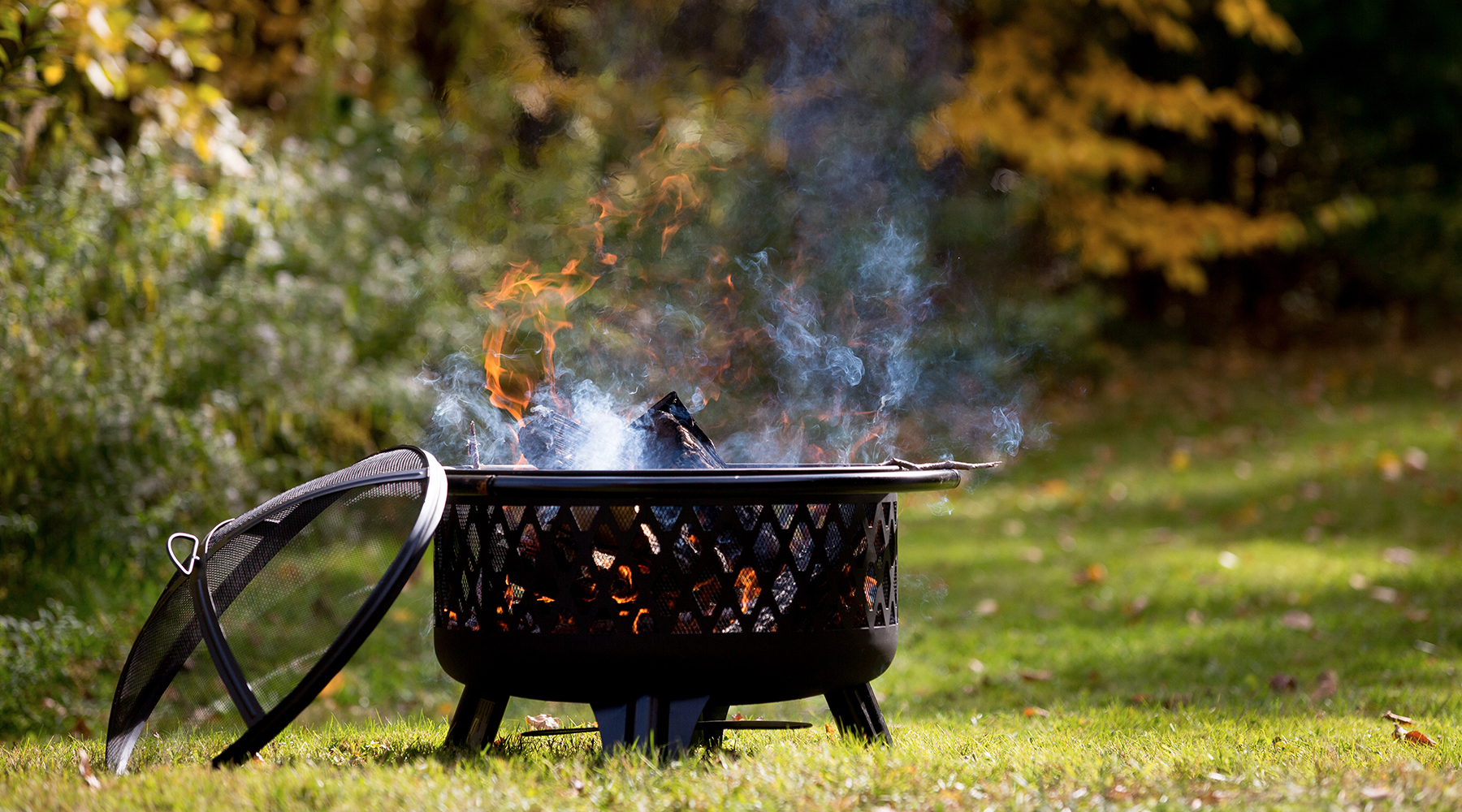
Alternatively, if you’re unsure about building a bonfire in your garden, the space is too small or you don’t want to spend time building one, invest in a firepit. They’re smaller, self contained and won’t do as much damage to your lawn.
Wildlife tip: To ensure as few wild animals as possible venture in to explore your bonfire before it’s lit, build it on the day. It’s a great way to get the kids involved and a great excuse to get your party started early!
The fireworks
Sparklers are a must-have for any age. Bonfire Night is never really complete without them and they’re so much fun to ‘draw’ in the air with. Just remember the rules: wear gloves and hold them at arm’s length, then, when they fizzle out, drop them into a bucket of water.

If you’ve the room in your garden for a fireworks display, then go for it! Always follow the instructions on the packaging and make sure your guests stay well back at all times. Keep fireworks stored in a box and only light one at a time with a taper at arm’s length.
The feast

Building your bonfire on the day means you can get the kids involved in the build mid-afternoon and keep everyone fuelled for the occasion with a delicious homemade pumpkin soup – see the recipe in our Halloween blog here. Serve in big mugs, and for dipping, cut a crunchy baguette into long diagonal slices, top with grated cheese and a sprinkling of chilli flakes, then toast to make large croutons, perfect for outside eating.

Traditional bonfire night fayre – toffee apples and toasted marshmallows – always goes down a treat, as do baked-on-the-bonfire jacket potatoes – delish. But what about keeping everyone fed and watered while you wait for your jackets to cook?

A bonfire night barbeque is the solution. Cook up tasty hot dogs topped with mustard and crunchy onions, or classic cheese burgers in soft brioche buns, plus tonnes of veggie kebabs coated in a delicious honey and mustard glaze (use metal skewers to prevent them from burning!). Whatever your summer barbeque favourite is, there’s no reason not to have it on 5th November too.

Mulled wine is the perfect tipple for outdoor events in the colder months. Cook it and serve it up inside, and watch how the sights, sounds and savoury smells from the barbeque and bonfire lure your guests back outside again! For non-drinkers, a luxurious hot chocolate topped with mini marshmallows is the perfect warming indulgence on a cold autumn evening.
The lighting

Let there be light and lots of it at your Guy Fawkes garden party! Festoon and fairy lights are the order of the evening hanging from branches (away from the bonfire and barbeque, of course) around fence posts, doorways, pergolas and gazebos. Low energy, high impact lighting will create atmosphere and make your guests feel like there’s nowhere else to be but in your back garden. Dress the table with candles in hurricane jars, and scatter LED tealights around to create a gorgeous centrepiece that people will flock to.
Top tip: have blankets for knees and plenty of cushions to sit on to keep everyone as toasty as possible as they tuck into your tantalising feast! Another way of making your autumn feast feel more luxuriant is to use a versatile indoor/outdoor rug. Made of hardwearing materials like polypropylene and boasting stylish patterns, these rugs can set your dining area off to perfection and protect your lawn as well!
The pets

Along with looking out for the wildlife in your garden, there are the pets inside your home that might need a little TLC on Bonfire Night too. Keeping curtains closed to muffle sound and hiding flashes of light is a quick and easy way to help them feel less scared. If you can leave the TV or radio on to distract them with noise, that is also worth trying. Making a doggie den is another way to help your little fluff ball feel more at home. If they already have a bed, add an extra blanket, make sure their favourite soft toy is in there too, and leave a chew toy and a bowl of water to keep them distracted and hydrated if they don’t want to move. If your pet doesn’t have their own bed, create one from a large cardboard box, fill it with cushions and blankets to make them feel all enclosed and safe, and if you can stay with them for hugs, then all the better!
Safety
There is lots of further information and safety tips for bonfires, sparklers and fireworks to be found on the London Fire Brigade website.
For more garden inspiration, check out our Garden department now.
]]>Here are our tips on making the most of your homegrown pumpkins – from growing seedlings to cooking soup!
Growing your pumpkins
Firstly, pumpkins are pretty easy to grow, though they do need space so the vines can sprawl along the ground. Some vines can get to as long as 6m (19ft), though around 3m (9ft) should be enough space for the average variety. According to Thompson & Morgan, in cooler climates pumpkin seeds can be sown in April and May but should be kept inside until all risk of frost has passed. Plant two seeds in small 7cm pots and thin out the weaker plants later on.
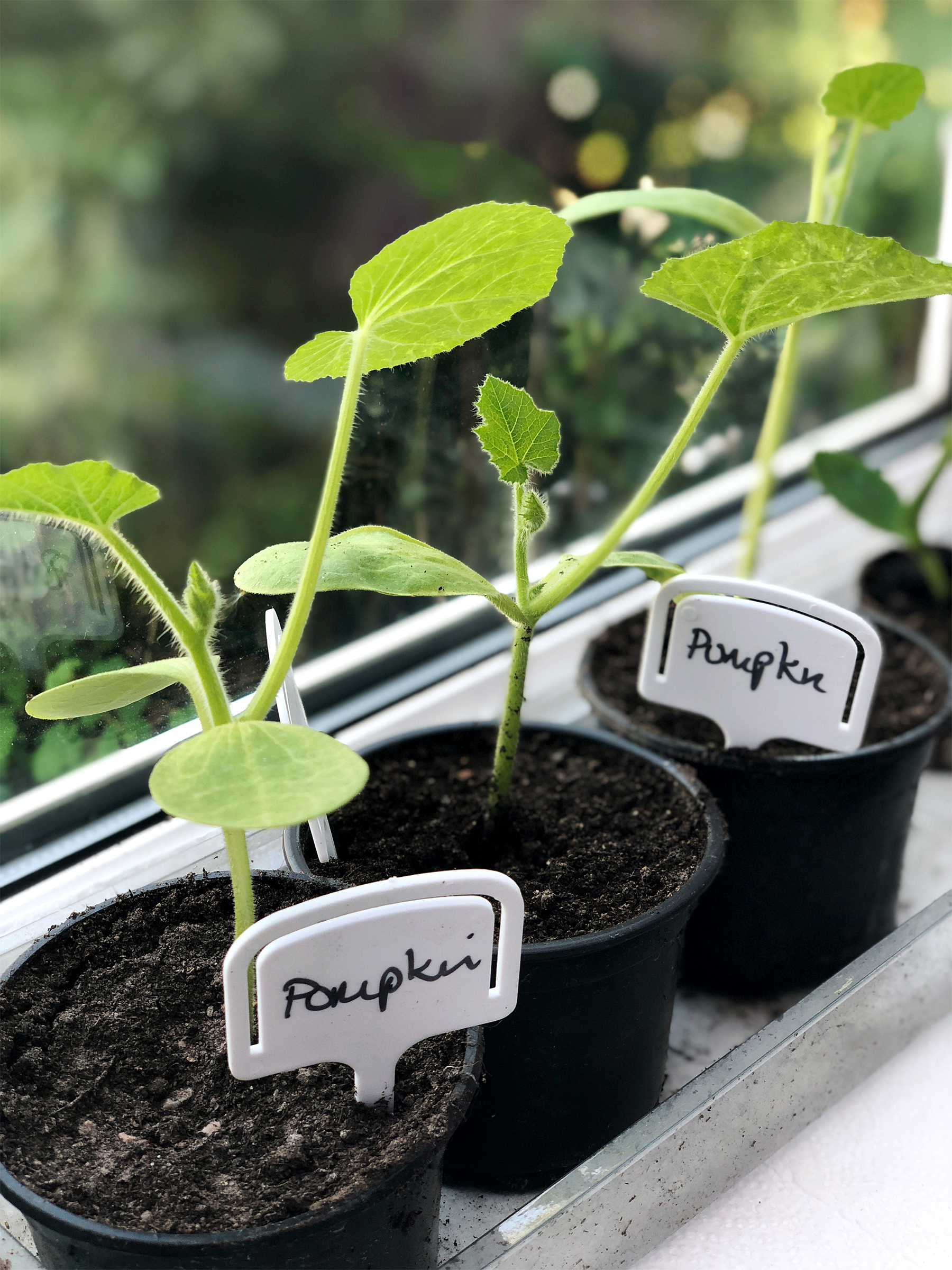
When daily temperatures average around 18C and above, and your seedlings are big enough, plant them outside at 3m (9ft) intervals in full sun. As the vines send out their tendrils, you’ll begin to see more and more leaves appear, then flowers will bloom and that’s where you’ll find your pumpkins start to bud. Pumpkins like to be warm and relish the sun, so remove any leaves that are throwing shade. Pumpkins can also be prone to rot if left to sit on damp earth, so raise them off the ground and rest them on seed trays, boards or thick cardboard.

If you can create a mound of earth to grow your pumpkins on, this will help with drainage and warming the soil. Make sure you water your plants regularly as pumpkins are very thirsty, and leave it as close to Halloween as possible to harvest them. This will ensure that the skins are nice and firm and easier to carve. If Halloween comes around before your pumpkins are properly ripened, it’s worth harvesting them a couple of weeks early and bringing them inside to ripen properly. Then it’s time to carve!
Carving your Jack ‘O Lantern
Once you’ve selected your perfect pumpkin, it’s best to start by drawing out your design on the outside of it. If you’re unsure where to start, try sketching out your Jack O’ Lantern’s face on paper first and transfer it to your pumpkin when you’re happy with the design.
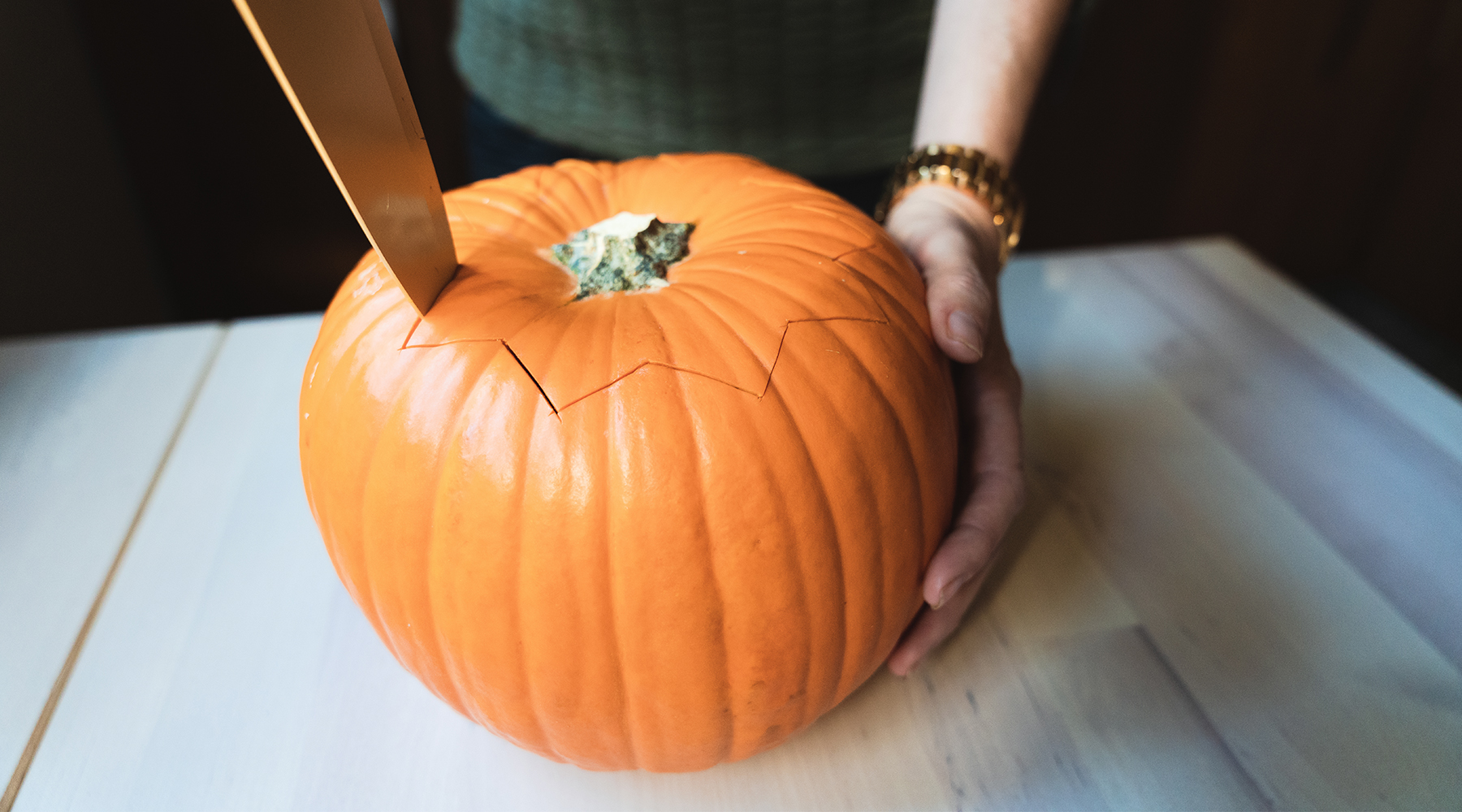
The first place to start is at the top by cutting out the lid. Most of the inside of a pumpkin is hollow so it’s easy to start cutting. Use a sharp knife and make the first cut to zig zag around the stalk at the top. Keep the knife at an angle in towards the centre of the pumpkin so that the lip won’t fall inside when you’ve finished cutting. When you have completed the lid, pull the stalk and the lid should come straight out. Make sure you make the hole at the top big enough to get your hands inside to carve the pumpkin out.
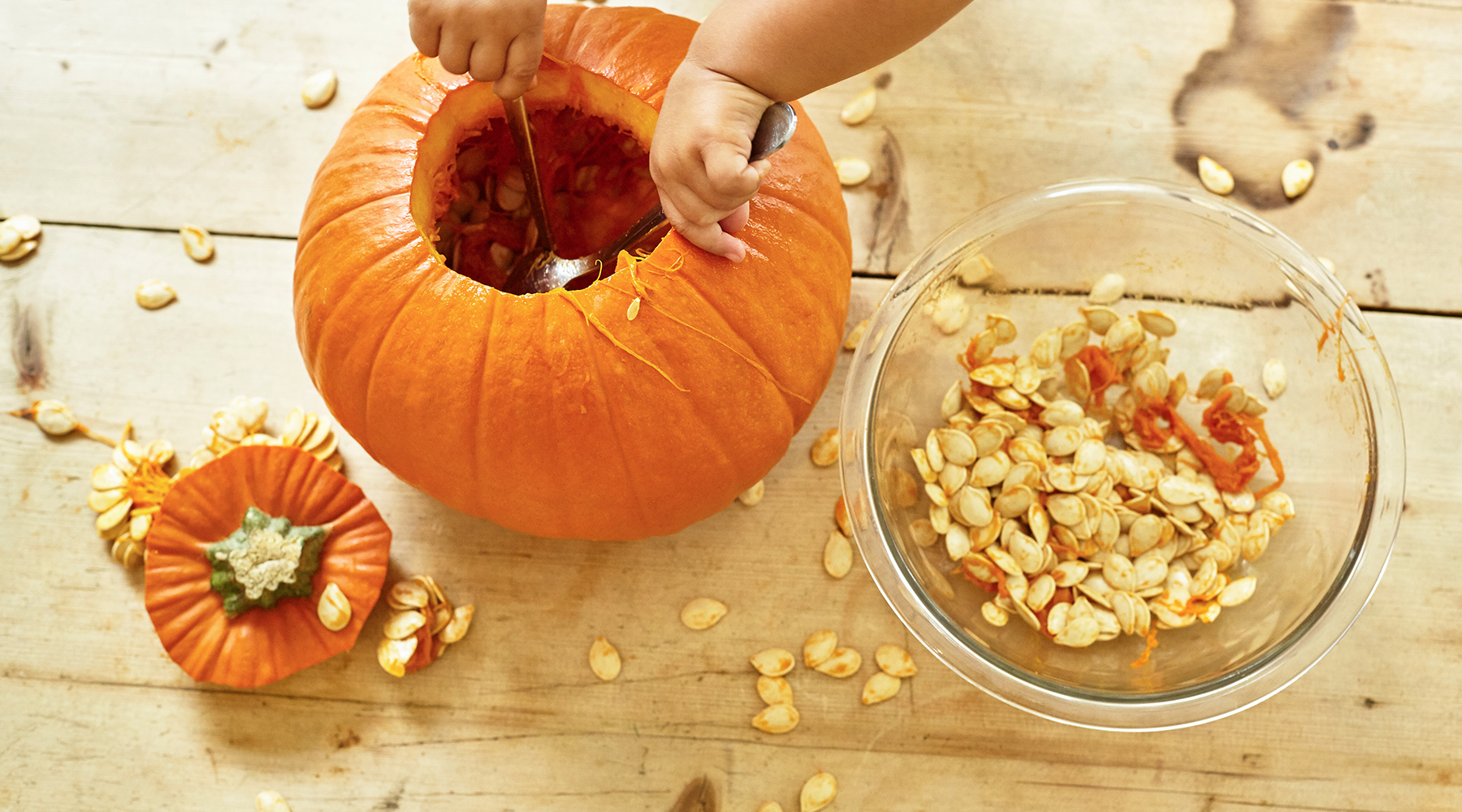
Inside you will see the fibrous pulp and the seeds, these can be pulled out by hand initially and then you can use spoons, or an ice cream scoop to remove the stubborn bits! Remember to set the seeds aside, you’ll need them for planting so you can grow next year’s crop and start the cycle again. You can also roast some of the seeds with olive oil to make a tasty addition to salads and snacks.
If you’re looking to make a pie or soup from your pumpkin, then continue to scrape away at the inside until you have reduced the sides down by about half or around 2cm (<1″) thick. See below for the full recipes, but you will need around 680g (24oz) of pureed pumpkin for a pie and around 450g (1lb) for soup, to create 4-6 servings.
Once the pumpkin is hollowed out and you are happy with your design, you can either free-draw it using a felt tip pen – this is a great way to get younger family members involved – or you can trace out the design from your paper using a sharp tool like a knitting needle. Then using your knife, start cutting out your Jack ‘O Lantern.

Go slowly and use simple straight cuts at first, keeping the knife perpendicular to the pumpkin. Once you have carved the basic eyes, mouth and other features, then you can start to shape the holes that are left and perfect your face.
Add two or three tealights inside your pumpkin, turn out the lights and watch it glow!
Here are a few QVC-made Jacks for inspiration!





Making a delicious autumnal feast
Pumpkin pie
Although traditionally served at Thanksgiving dinner, its creamy filling and tasty pastry base make it a delicious end to any meal.

Ingredients:
For the shortcrust pastry base:
- (100g) 4oz butter
- (200g) 8oz self raising flour
- 1 – 2 tbsp cold water to bind
For the filling:
- 680g (24oz) pumpkin puree
- 100g (4oz) brown sugar
- 3 eggs
- 300ml (10fl oz) single cream
- 1 1/4 tsp cinnamon
- 1/2 tsp ground ginger
- 1/4 tsp ground cloves
- Pinch of salt
For the garnish:
- 175ml (6fl oz) sour cream
- 125ml (4fl oz) whipped cream
- 2 tbsp sugar
- Crumbled walnuts to garnish
Method:
Making the shortcrust pastry base:
- Preheat the oven to gas mark 5 / 190C
- Sift the flour into a mixing bowl then cut the butter into small pieces before adding to the bowl
- Cover the butter with the flour and then rub the mixture between your thumb and fingers to create bread crumbs
- Add the water and mix in with a butter knife, then gather all the dough together with your hands making sure you pick up any residue in the bowl
- Flour your worktop or board and knead the pastry into a ball
- Then roll out your dough to about 4cm – 5cm larger than your pie tin turning the dough a quarter turn after each roll
- Line your pie dish with the pastry and fill with baking beans
- Cook your pastry base for 15 minutes, remove the beads and cook for a further 5 minutes
Making the filling:
- Combine the sugar, salt and spices in a small mixing bowl
- Blend the pumpkin puree and eggs well, in a mixer
- Gradually add the sugar and spice mixture and the cream and blend everything together until smooth
- Pour the mixture into your pie base
- Place the tin into the oven and bake for 45 – 50 minutes or until small knife comes out clean
- Serve either hot or cold
For the garnish:
- Whip the sour cream, whipped cream and sugar together until light and fluffy
- Add a dollop to each pie serving and sprinkle with crushed walnuts
Pumpkin soup:
For a warming, colourful lunch option or tasty starter, serve this hearty pumpkin soup in small hollowed out pumpkins and top with crunchy croutons or chunks of rustic bread!

Ingredients:
- 30g (1oz) of butter / 2 tbsp olive oil
- 450g (16oz ) pumpkin puree
- 2 pints chicken stock – use vegetable stock for a vegetarian version
- 25ml (8fl oz) double cream
- 2 small onions
- 1 stalk celery
- 1/2 tsp tabasco sauce or 1/2 tsp – chilli flakes
- 1 tsp paprika
- Pinch of salt
Method:
- In a large saucepan melt the butter / warm the oil over a moderate heat
- Add the onion and the pumpkin and cook, stirring occasionally for 5 – 6 minutes or until the onion are soft and transparent
- Gradually stir in the chicken stock, salt, celery, and spices
- Bring the mixture to the boil, stirring constantly
- Then cover the pan and simmer for 30 – 35 minutes or until the pumpkin and celery is very tender
- Pour the mixture into a blender and blend until smooth
- Stir in the cream and return to the saucepan
- Cook the soup on a moderately high heat until piping hot but not boiling and serve immediately
Enjoy!
For more gardening inspiration, check out our Garden & Leisure department.
If full-blown fancy dress is just not your thing, why not add a little Halloween-inspired twist to your look with these great fashion designs from Frank Usher? The embellished floral skull T-shirt will look great under your favourite leather biker jacket, while the embellished skull jersey top is the perfect layer for welcoming those cheeky Trick-or-Treaters to your door!
Butler & Wilson are your go-to brand for Halloween accessories, check out their batwing enamel earrings, skull motorbike brooch, enamel skull necklace and crystal and pearl spider ring for just the right amount of spooky sparkle!
And why not complement your new pumpkin decor with this beautiful ceramic embossed candle with holder from Homeworx by Harry Slatkin. Finally, if you want to add some Halloween nonsense to your home Pacman’s ghosts will deliver!
]]>Here is our list of must-do jobs for your September garden.
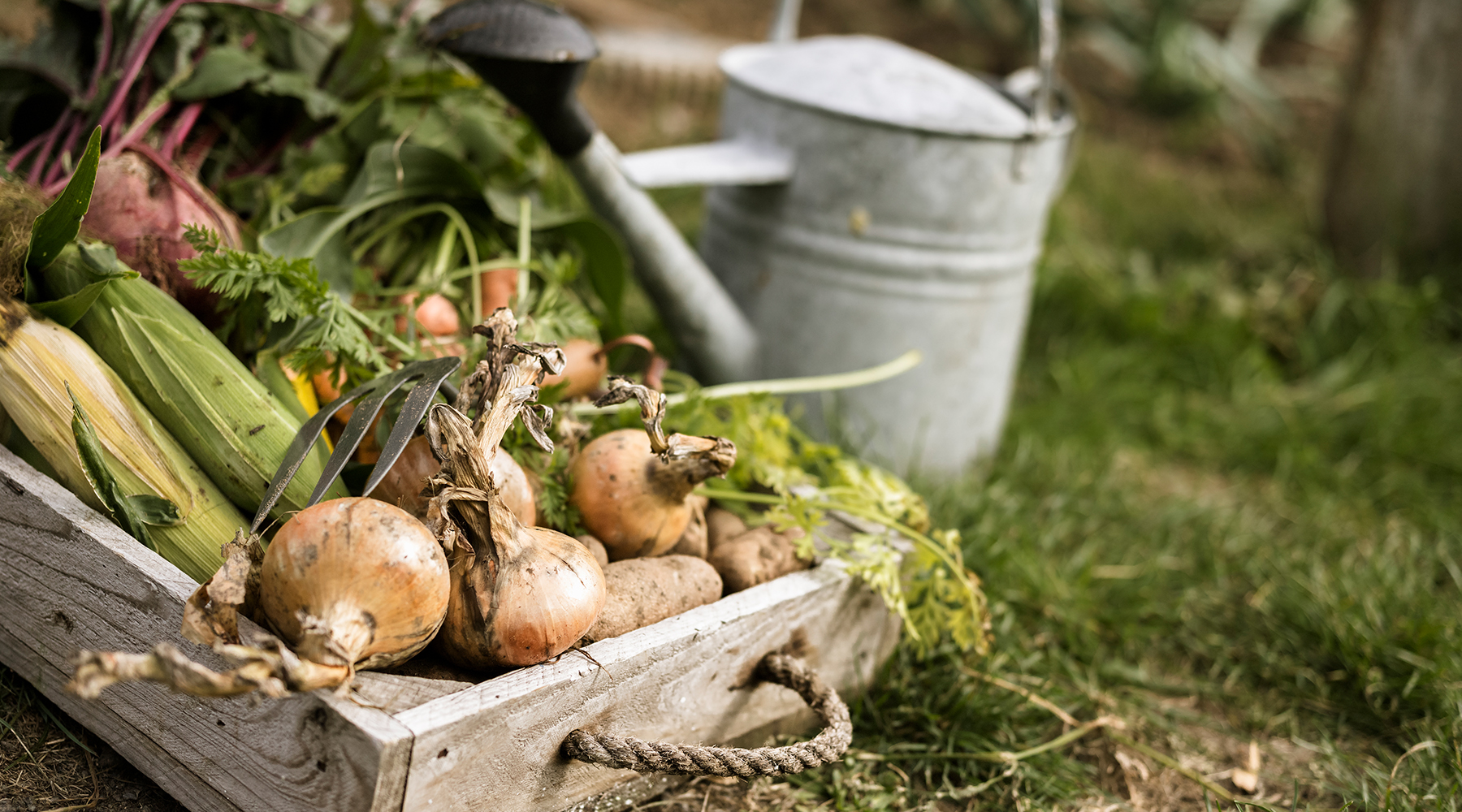
Savour the flavour
Harvest the last of your homegrown crops. Onions, runner beans, courgettes and potatoes, along with raspberries and apples are all ready to harvest in September and there are dozens of recipes to help you preserve them if your crop is a bumper one! Members of the bean family will freeze well and if you ensure you dry out your garlic bulbs thoroughly, they will also keep in storage. Onion marmalade is a superbly savoury-sweet treat to liven up a festive cheese board, while raspberry jam is the only filling you need for a genuine Victoria sandwich. If you’ve never tried courgette fritters or potato and courgette pancakes, now’s your chance, they’re utterly delicious.
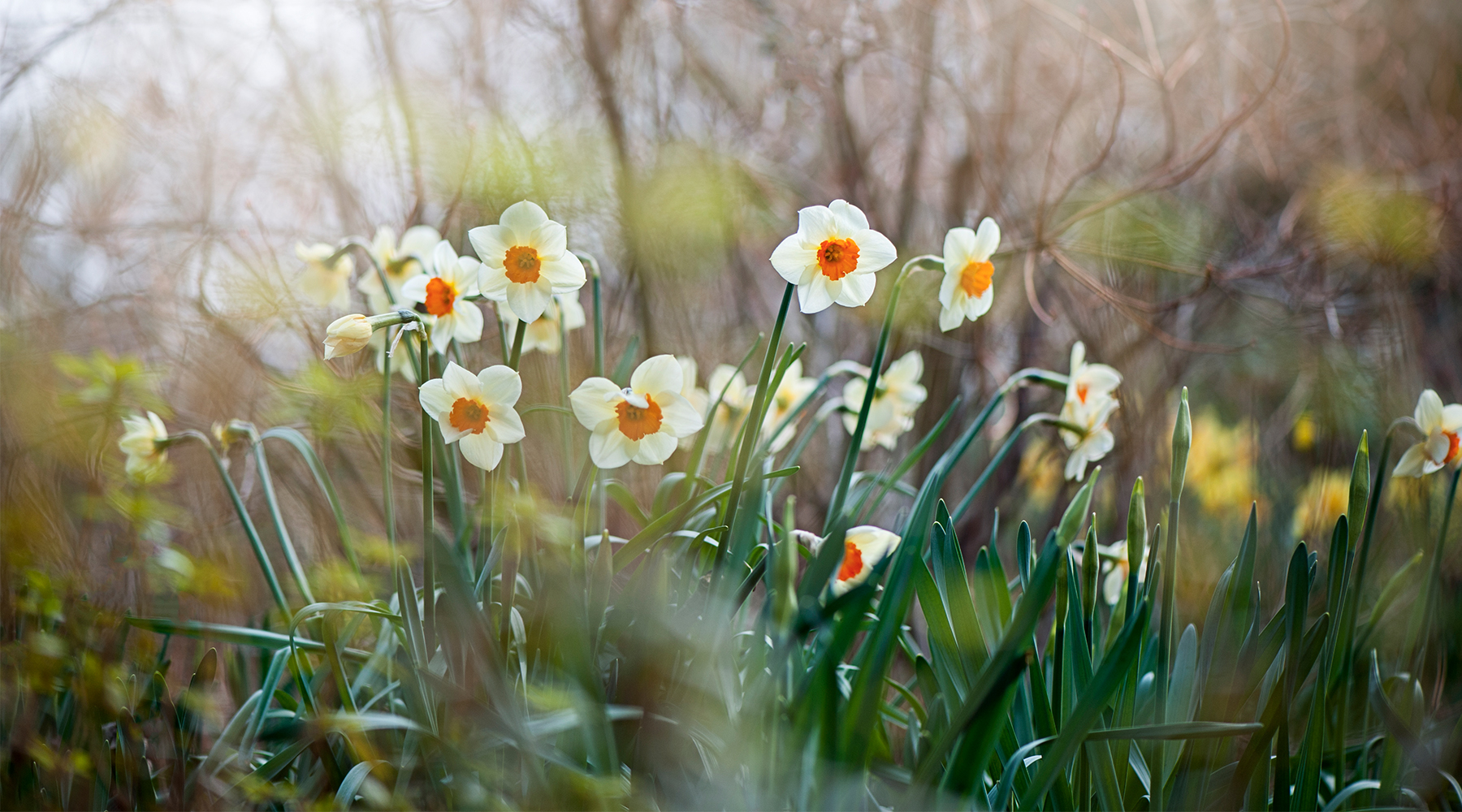
Prep for a colourful spring
Plant spring-flowering bulbs such as daffodils and crocuses, as well as bedding plants, like pansies now and prep your garden for a full-on floral display when winter starts to wane. There is also a wealth of leafy spring vegetables that you can plant in September. Spinach, lettuce, Swiss chard and kale, plus meatier veg like broccoli, carrots and cauliflower will be sure to get your mouth watering come spring.
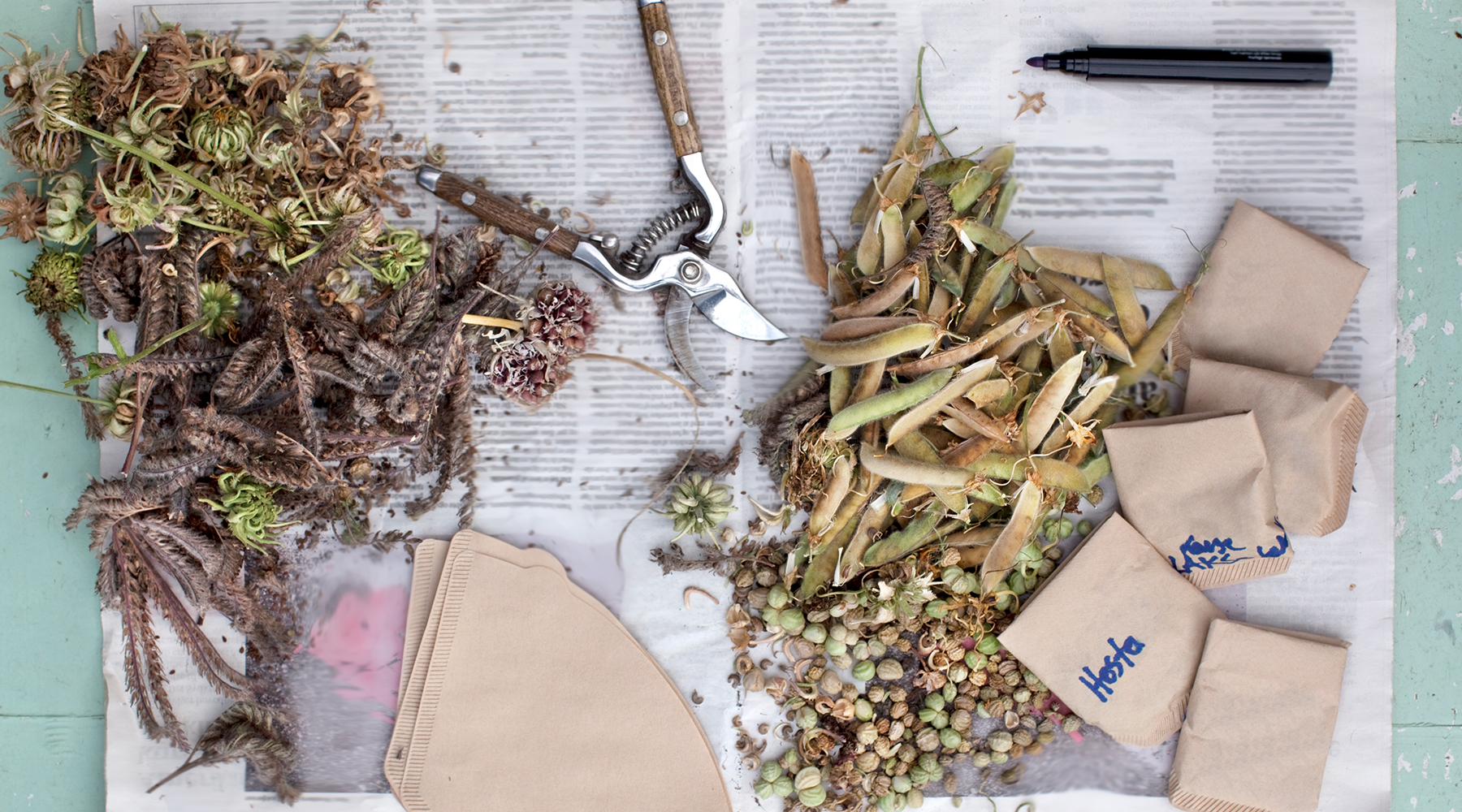
Reap what you sow
Collect seeds from your current plants and sort them into marked containers ready for next season. Shake or scrape the pods and heads to make sure you collect every seed, store them in sealed tins or envelopes to ensure they stay dry, and keep them in a cool dark place, such as a garage, shed, or even your fridge. Hardy annual seeds can be sown now for a gorgeous display in spring, and sowing seeds in autumn often means earlier blooms than if you wait until spring to sow. Poppies, cornflower and Nigella are all great hardy annuals to sow outside this month.
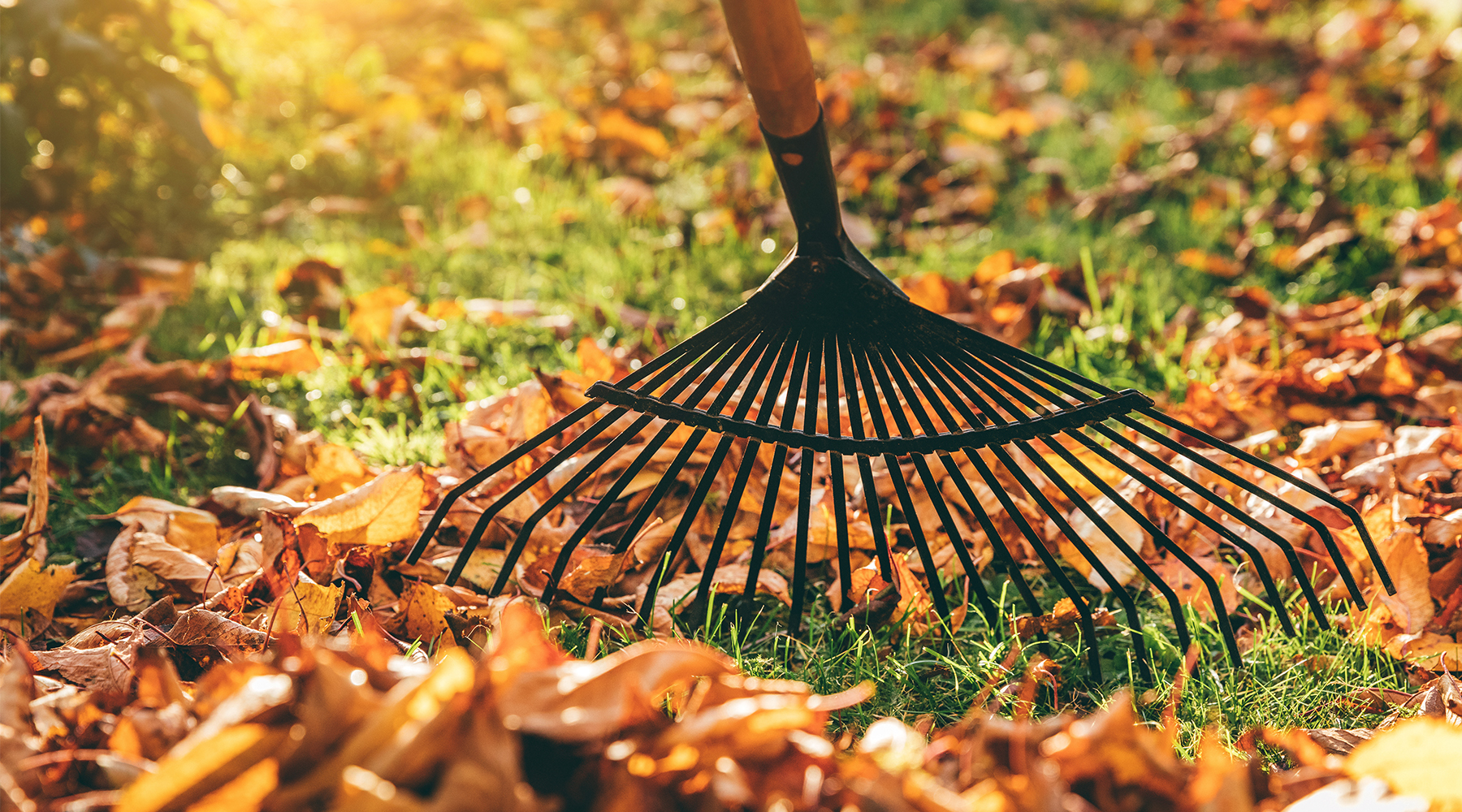
Preen your green
After a summer of entertaining and spending time outdoors, it’s time to give your lawn some much needed TLC to get it back to its gorgeous self. Rake away the falling leaves, thatch and debris, aerate the grass and give it a really good feed with a suitable fertiliser for the season to ensure it grows back lush and strong next year. Trim back the edges where they have overgrown onto the patio or beds and add lawn seed to any sparse or patchy areas to ensure new growth after winter.
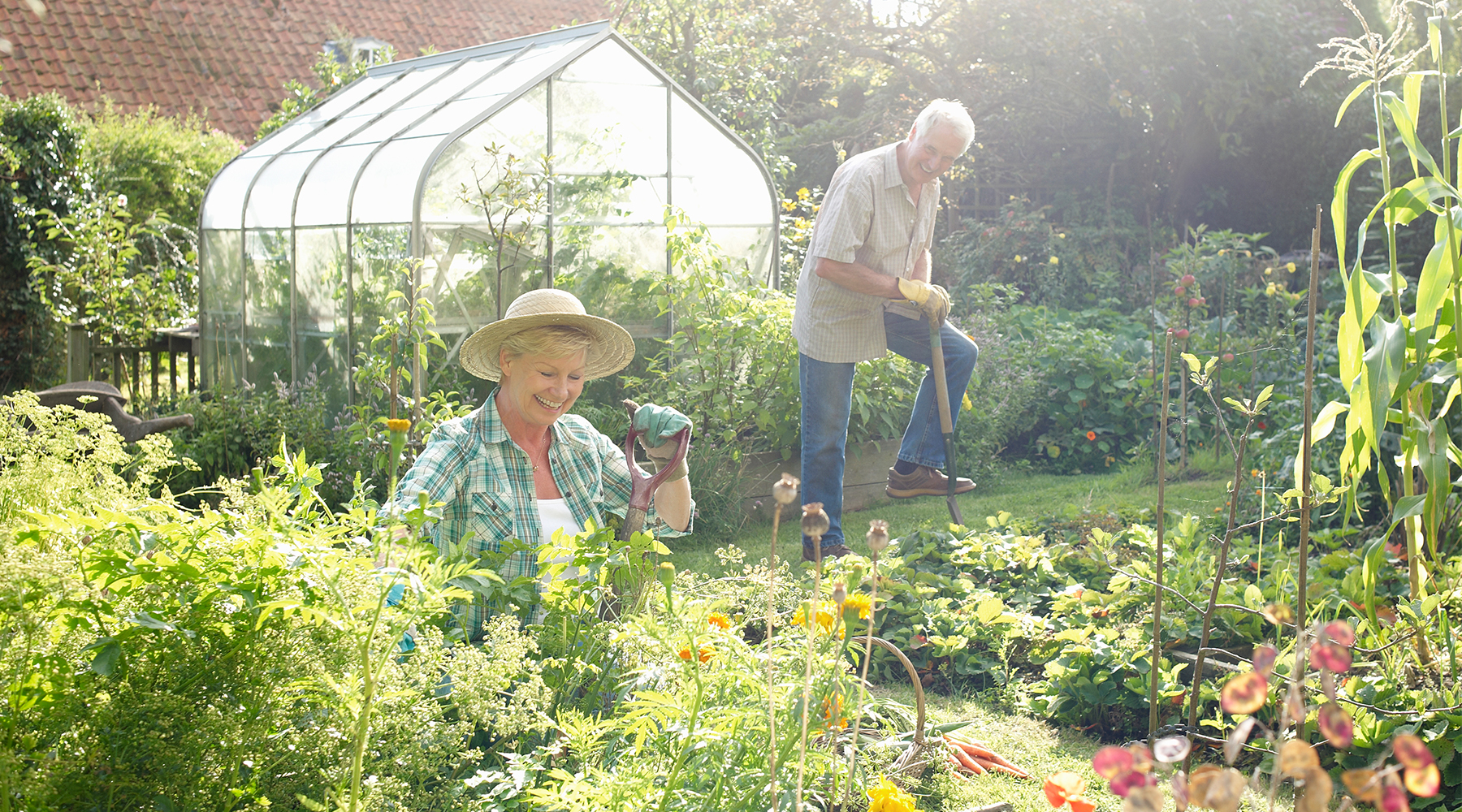
Get your greenhouse glowing
Take time to clear out and tidy up your greenhouse ready for the new nursery season. First open the vents and door, empty all the contents out and start from the bottom up. Clean the glass and frames of algae and dirt with warm soapy water removing and preventing growth of mould and mildew. Cleaning the windows will also ensure the most light gets inside and to your plants. Use a water-vinegar solution rather than harsh chemicals to get those panes sparkling. Remember that September can also still have some really warm days so keep on top of watering this month too!
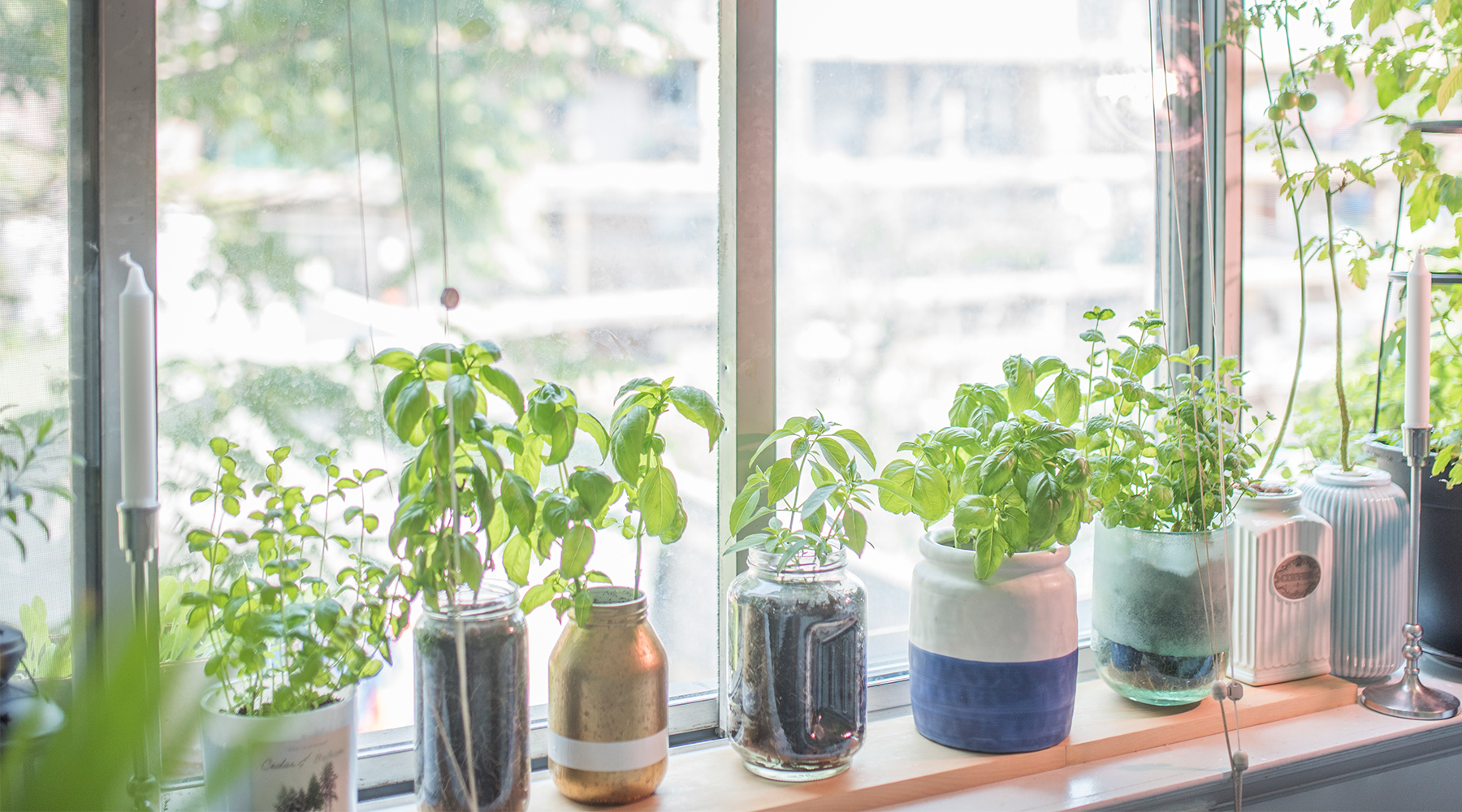
More, more, more
Continue to deadhead the plants in your pots and containers to keep them looking fresh and encourage as many new blooms as possible until the first frosts. To increase your plant stock for next year, divide congested clumps of perennials. Gently work outwards from the crown to divide the plant using your either your hands or garden forks, depending on their size. Some plants send out plantlets so these can be teased out and replanted. As you replant or pot up, water well and mix in some compost to the soil to encourage growth. September is also a great time to propagate cuttings from your tender perennials – keep them in a frost-free environment, preferably on a windowsill inside, as their roots establish.
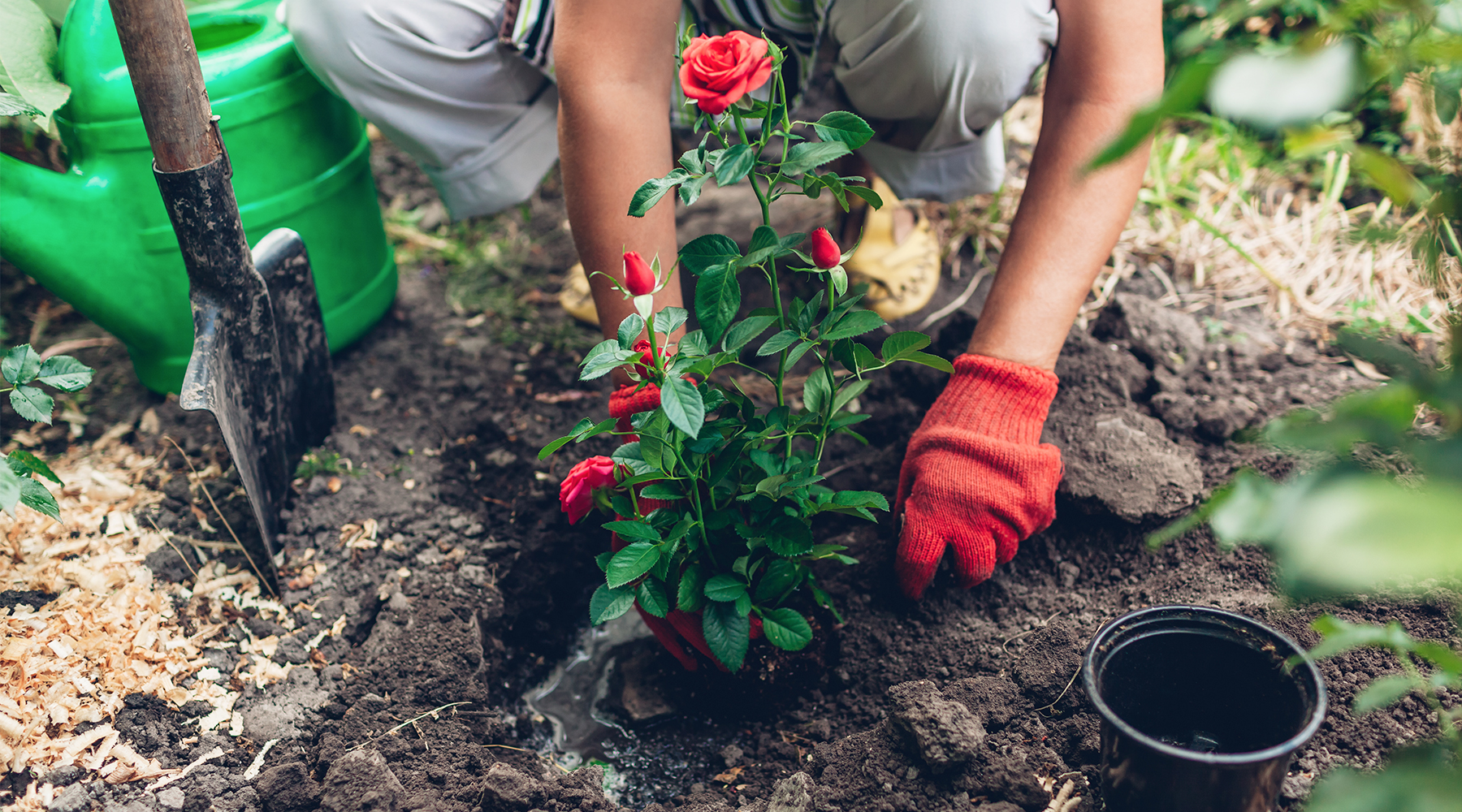
Nourish = flourish!
Add some compost to your soil – adding a layer now will help nourish the soil by the time spring comes around, to leave you with revitalised earth that the plants will flourish in. Autumn is also a good time to fertilise your rose bushes using a special formula to promote root growth rather than foliage. Planting roses is also good to do around the start of September, at least six weeks before the first frosts, to give the roots time to establish themselves before they go dormant over winter.
For more ideas, inspiration, plants, tools and more visit our garden department page now.
]]>To make the most of this plethora of natural perfumes, plant them in the places where you can be close. Window boxes, patio pots and outside your door are ideal, the aromas can travel inside your home on the gentlest of breezes. Alternatively, placing these plants around a bench allows you to surround yourself with scent, or adding them along pathways allows their fragrance to escape as you brush against them.
Summertime walks in suburban streets and strolls in the countryside are abundant with fragrance to inspire you, but there are plenty of plants that deliver beautiful aromas during the other three seasons of the year. Discover how to create a year-round festival of fragrance for your garden with our list of scented plants by month and discover the sweet-smelling plants that will add colour and fragrance to your outdoor space throughout autumn, winter, spring and summer.
Spring
Meteorological spring – March, April and May – is the time of year when our gardens, warmed by the ever-nearing sun, start to come alive and fill the air with fresh, new fragrance. What better way to enjoy getting back out there, than if you’re accompanied by the beautiful aromas of plants like Gold-edged Winter Daphne, Chocolate Vine, Sweet Peas and Clematis?
March
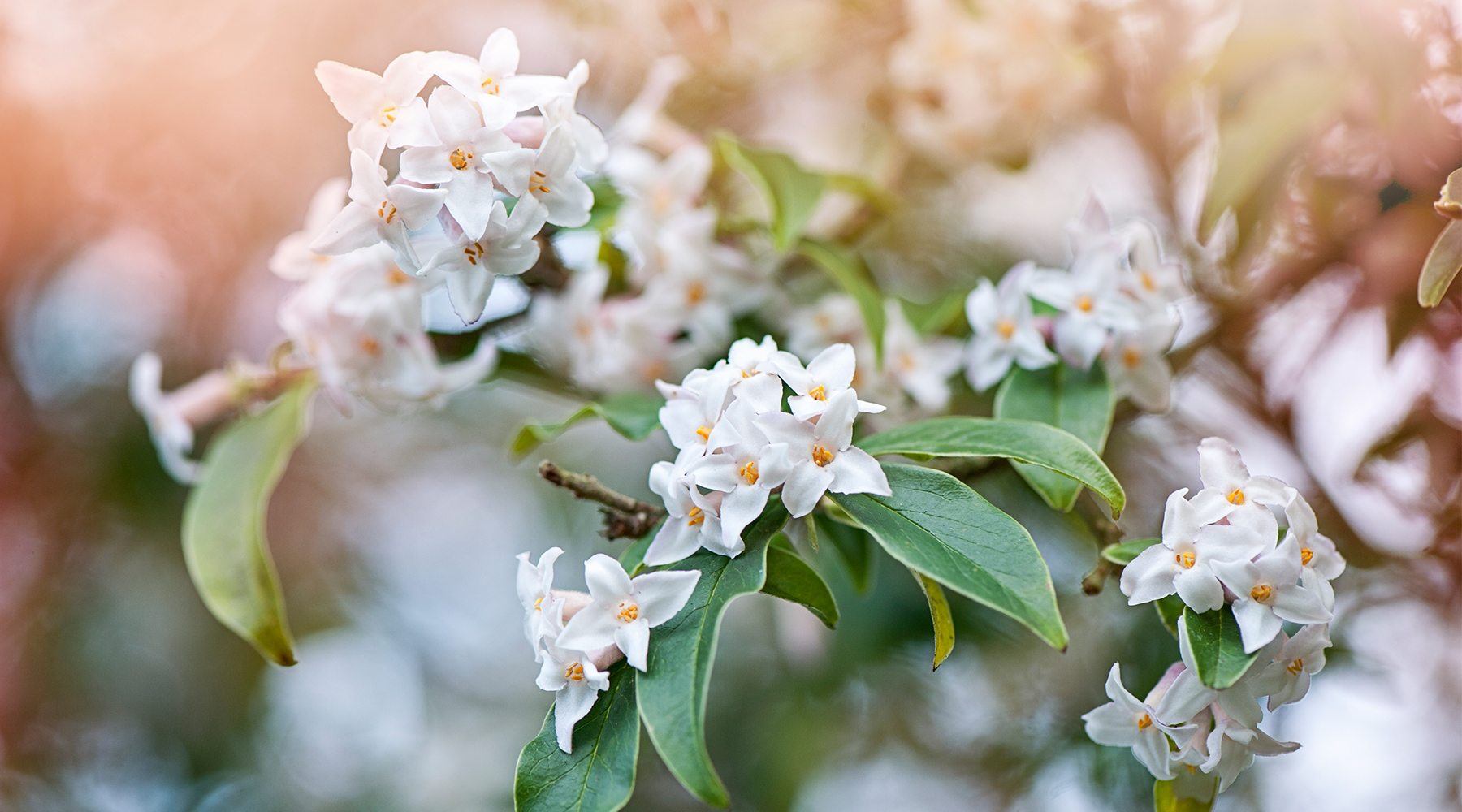
Gold-edged winter daphne – this shrub boasts red-purple flowers with pale centres that bloom in February and March with a sweet and spicy perfume.
Hyacinths – well known for their ability to flower early when forced, these much-loved flowers bloom naturally in March and April in a vast array of colours – lilac, pink, white, cobalt blue, cream, apricot and red – and offer a sweet lingering fragrance.
April
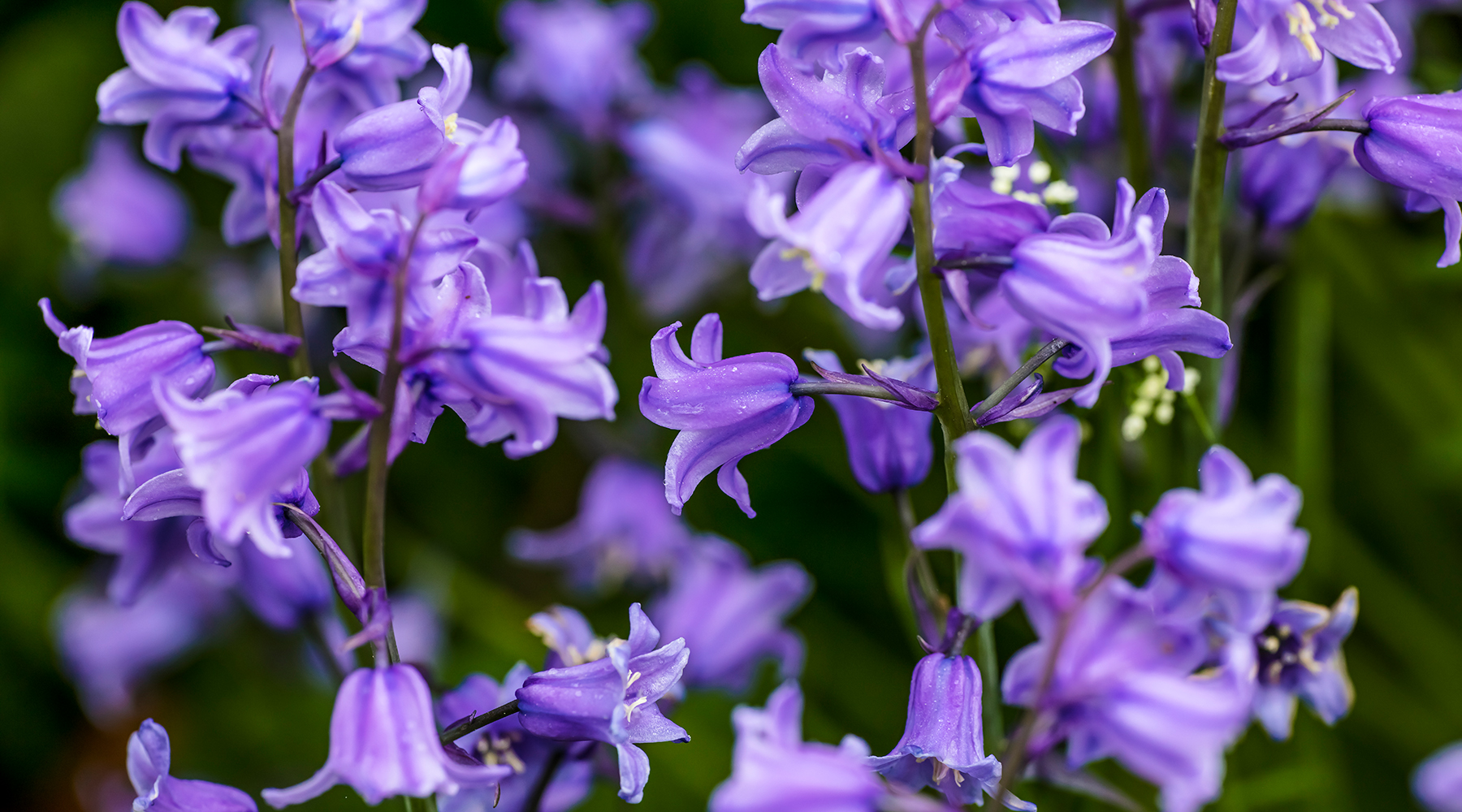
Native bluebells – commonly seen as a carpet of blue in ancient woodland, planting these delightful bulbs in your own outside space will ensure it comes alive with colour in April and May and also filled with their sweet, fresh fragrance.
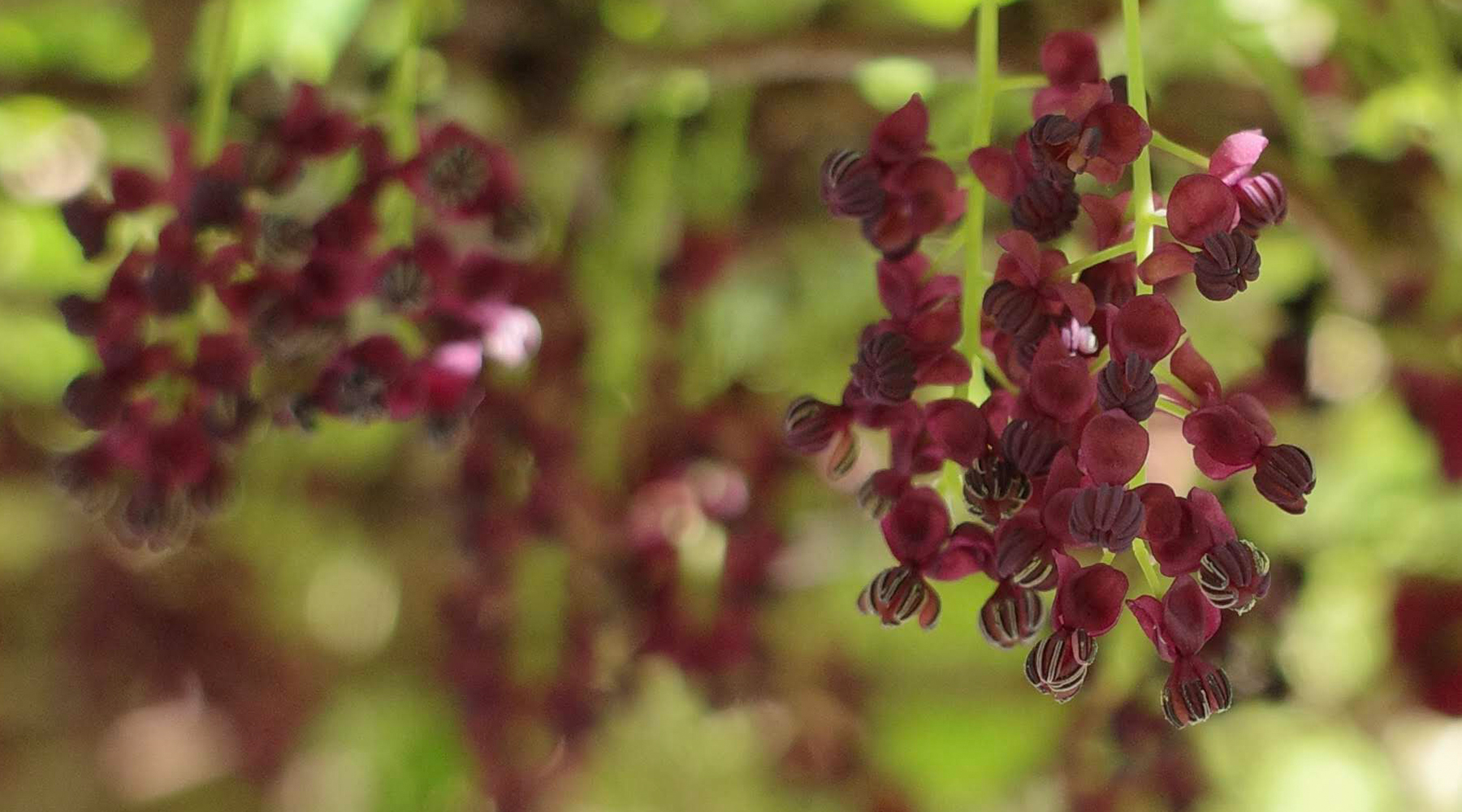
Chocolate vine – boasting a heady aroma that reminds you of delicious Belgian chocolate, these chocolate maroon flowers appear in April to get your tastebuds tingling.
May

Mexican Orange Aztec Pearl – this easy-to-grow evergreen shrub starts blooming in May with pretty, pink-tinged buds that grow into white flowers with a rich sweet orange blossom scent.
Clematis Montana Elizabeth – one of the easier clematis to grow, this variety is May flowering and produces blooms with a sweet, vanilla-fudge fragrance.
Sweet peas – this annual climbing plant produces pink, purple and white, highly scented flowers in May with a fragrance that is reminiscent of sweet honey and citrus.

Sweetshrub Venus – this deciduous shrub boasts large white or purple flowers each May that produce an intense watermelon and strawberry fragrance.
Summer
June, July and August are the months when we get to really enjoy our outdoor space, soaking up the sunshine and listening to the birdsong as we relish the rewards of the previous months’ hard work. Imagine reading a book, enjoying breakfast or doing a spot of weeding and feeding wrapped up in the wonderful scents of plants like Common Broom, Hidcote Lavender and night-scented Tobacco Grandiflora….
June

Peony Hermione – this double-bloom variety produces highly scented large pale pink flowers in June that proffer a scent that boasts a mix of rose and jasmine but a little bit sweeter.

Common Broom – this wiry shrub produces an abundance of brilliant yellow flowers in May and June that offer a light yet distinctive, sweet, vanilla-like fragrance.
Hidcote Lavender – this variety of evergreen shrub, produces dense spikes of tiny purple flowers from June to September over silver-green highly scented foliage. Deadheading will produce more flower spikes.
July
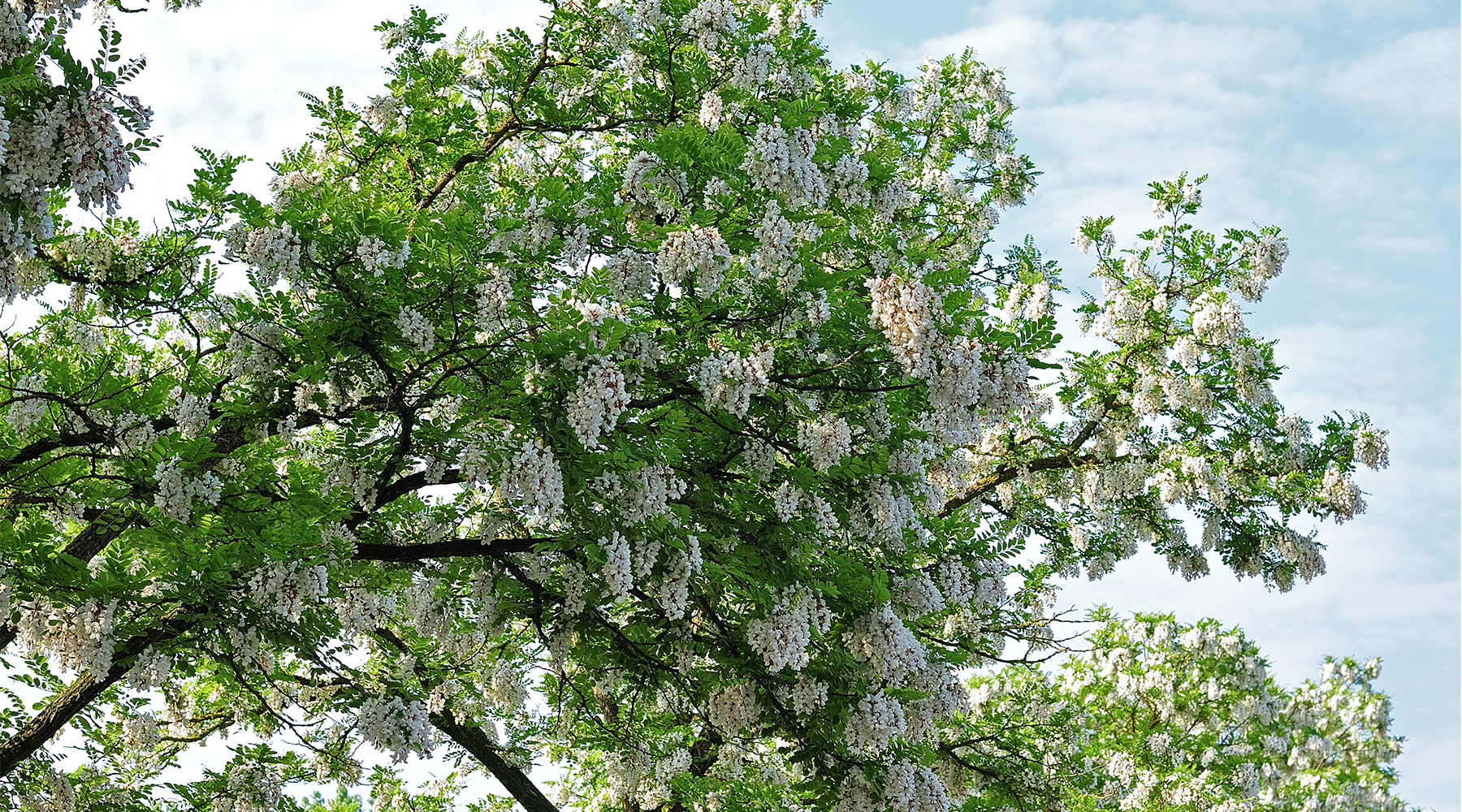
False Acacia – this busy tree produces pendulous racemes of pale yellow or pink flowers that bloom from May to July and boast a sweet fragrance reminiscent of orange blossom.
Tobacco plant Grandiflora – renowned for their large white trumpet-shaped flowers that bloom from July to September, with a warm, spicy aromatic that will fill the evening air with a heady fragrance.
August
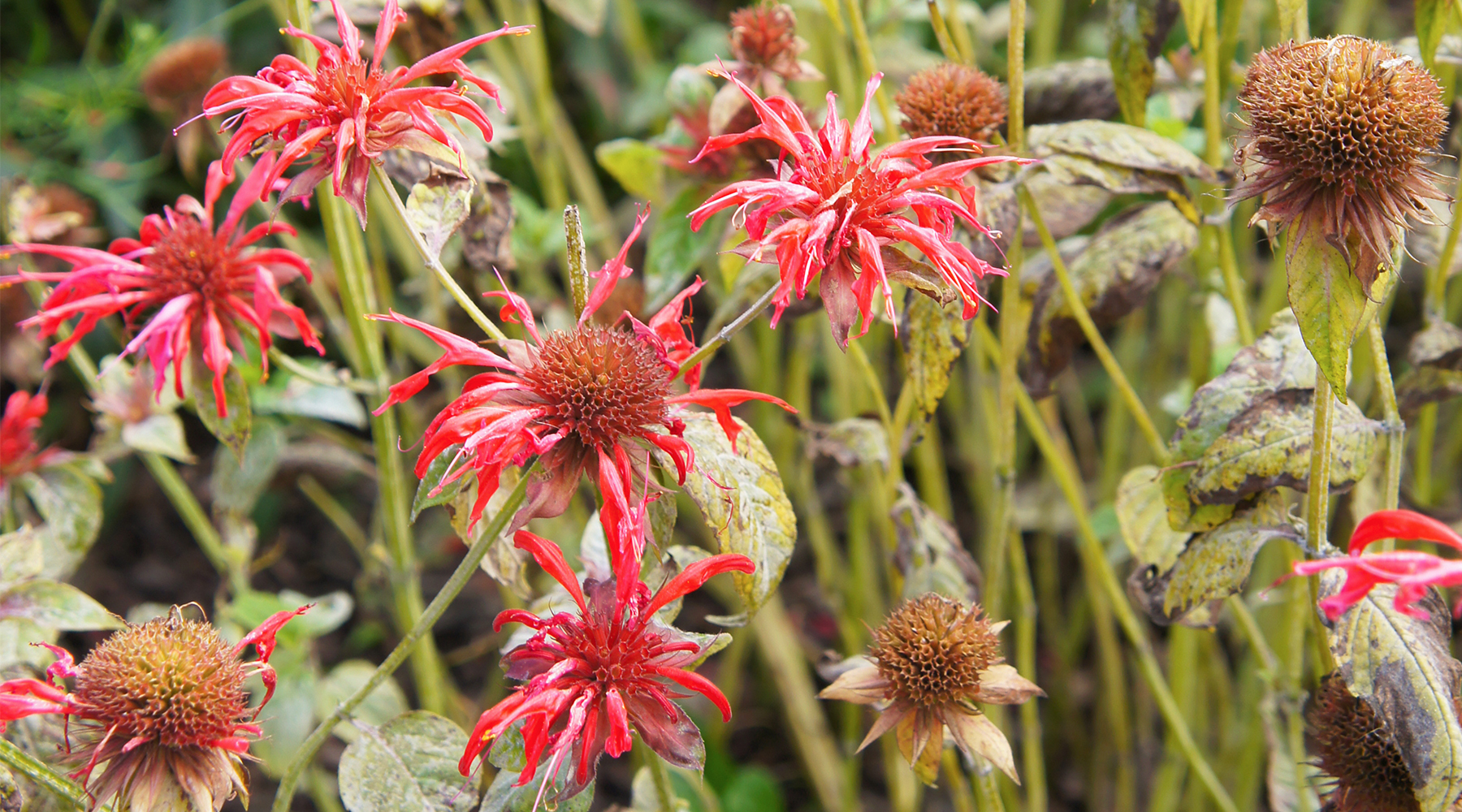
Bergamot – Cambridge scarlet variety is a herbaceous perennial that will produce tall stems bearing a large number of tubular, scarlet red flowers that create a shaggy dome, flowering from June to August. The leaves are aromatic and smell of basil and mint, similar to earl grey tea.
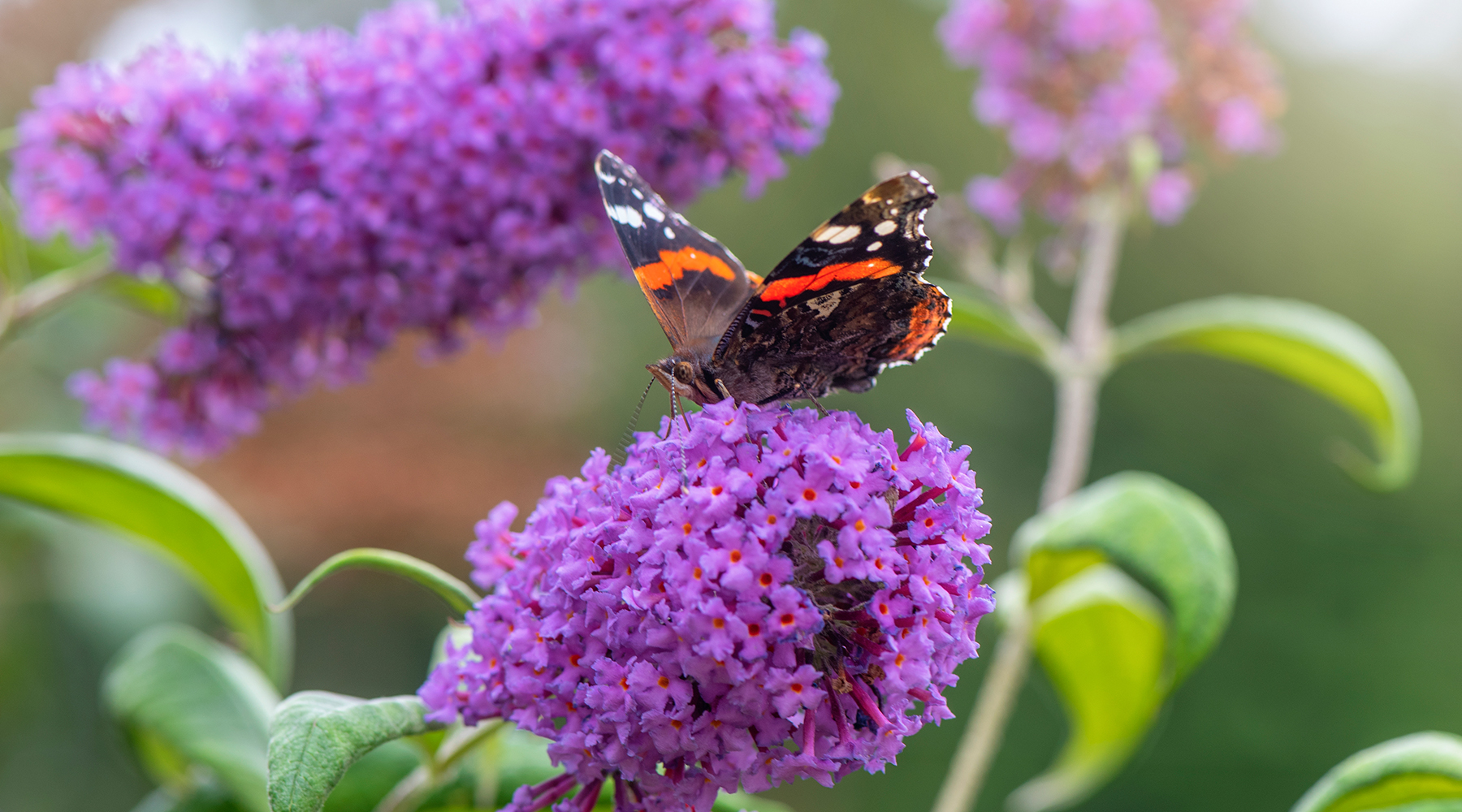
Buddleia – known as the butterfly bush, buddleia can be seen all over the country from derelict buildings to railway lines and more unusual places. This fast-growing shrub produces long tapered panicles at the end of its branches between July and September that produce a powerful sweet honey-like fragrance.
Autumn
September, October and November are an exciting time for the garden, the transition from green to autumnal tones is swift and dramatic, but ultimately beautiful. As you’re catching the last few warm days, raking leaves and getting the last lawn-mow in, do it enveloped in the fragrant smells of plants like Salvia, Abelia, Lilac and Camellia.
September
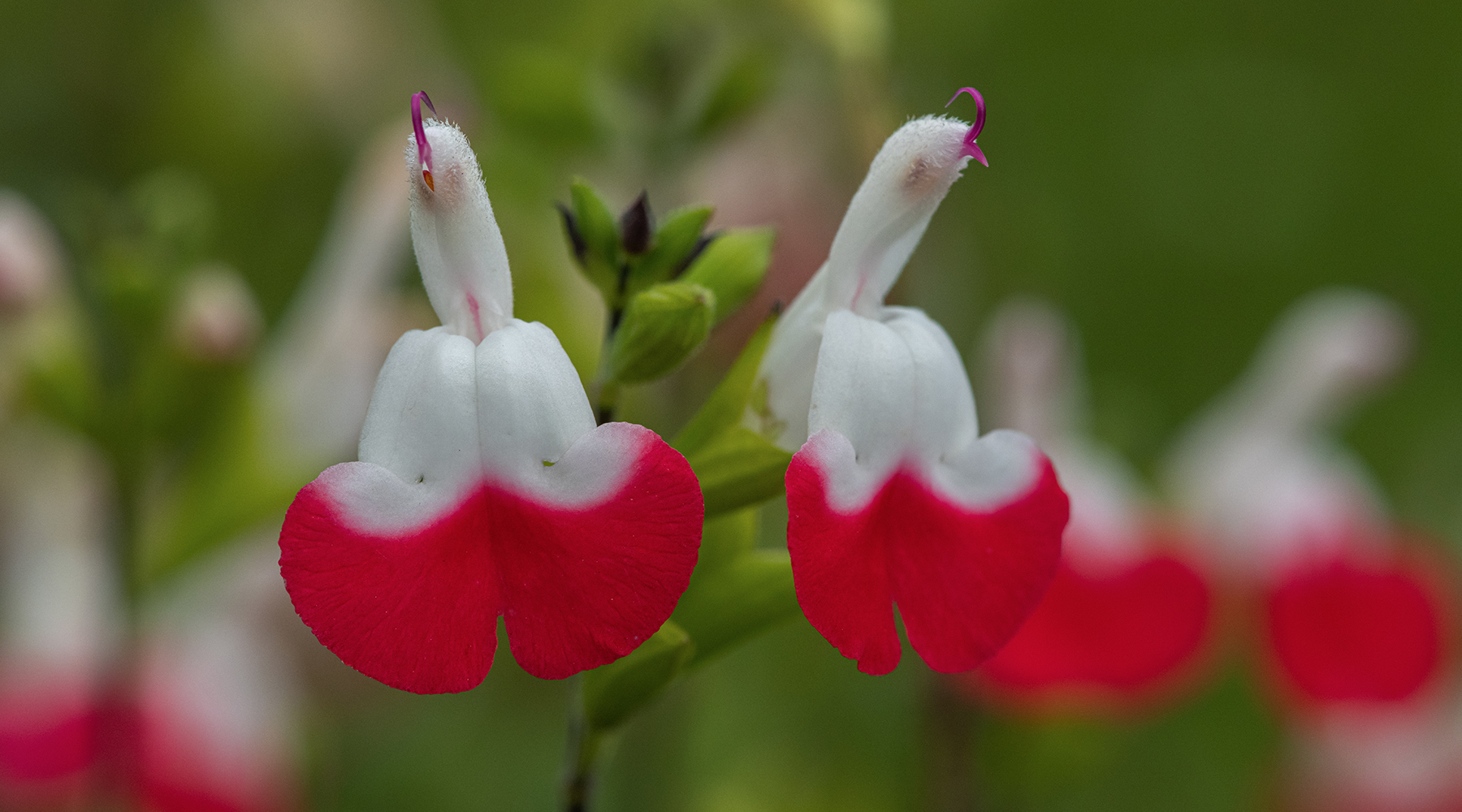
Salvia ‘Hot Lips‘ – a bushy evergreen perennial bearing small aromatic leaves with a fruity scent, reminiscent of blackcurrants, and large open-mouthed red and white flowers that bloom from June to October.
Abyssinian Gladiolus – boasting long grassy, sword-shaped leaves and spikes of fragrant white tubular flowers with a maroon-purple blotch in the throat. On arching slender tubes these flowers add movement to borders and a sweet, fresh fragrance to the air from August to October.
Daphne Eternal Fragrance – this compact, semi-evergreen shrub produces dark green leaves and clusters of white/flushed pink highly fragrant tubular flowers that bloom with new growth. Enjoy their powerful nutmeg, honeysuckle aroma from April to October.
October

Abelia Grandiflora Confetti – this dwarf evergreen shrub is slow growing with variegated, green and white, foliage and produces lightly scented flushed pink flowers from July to October that offer a fragrance similar to lilacs. Note: the sunnier the aspect, the more flowers you will get!
Giant Hyssop Blackadder – this herbaceous perennial produces blue-black spikes packed with tiny blue flowers that bloom in September and October. Its clump of fragrant foliage offers a scent reminiscent of anise or liquorice.
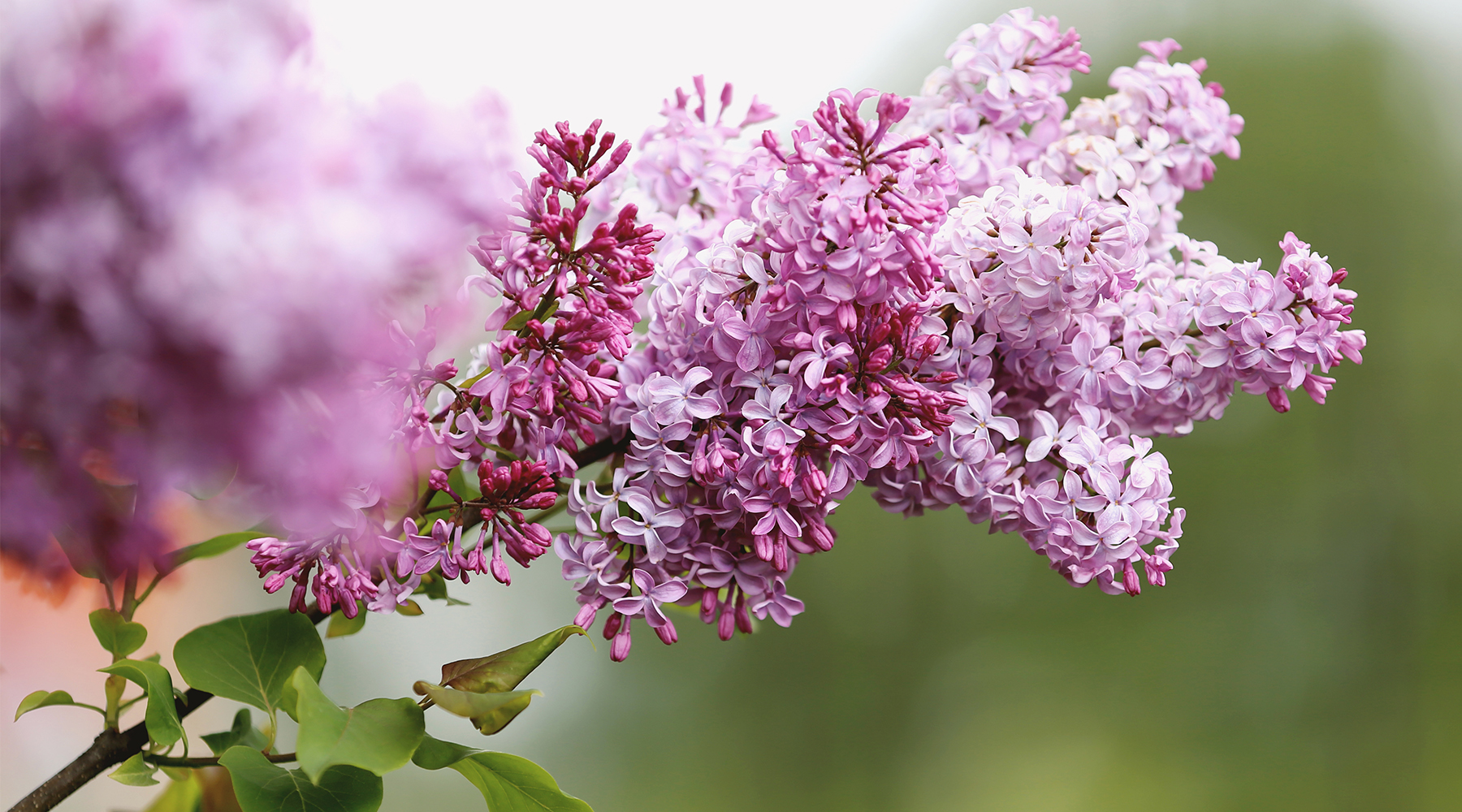
Lilac Pink Perfume – an easy-to-grow deciduous shrub that has an initial flush of panicles of pale pink flowers in mid to late spring, and then intermittently until October, offering a sweet and intense lilac perfume.
November
Sweet Bay – one of the oldest cultivated plants, Bay’s deep green leaves can be clipped to create a decorative accent to patios in pots. Blooming between March and May with small yellow flowers, it’s the aromatic leaves that offer the herbal, slightly floral scent that you will enjoy.

Camellia Sparkling Burgundy – also known as Winter Blooming Camelia, this evergreen shrub has glossy, leathery dark green leaves and large showy blooms that flower from October to January, producing a light, pleasant floral fragrance.
Winter
The winter months of December, January and February are quieter times in our gardens. The local territorial robin seems to be doing most of the hard work until the first snowdrops begin to poke through the frozen ground. But if you do venture outdoors, on those crisp cool sunny days, do so surrounded by the beautiful perfume of plants like Winter Beauty Honeysuckle, American Witch Hazel and Mahonia.
December
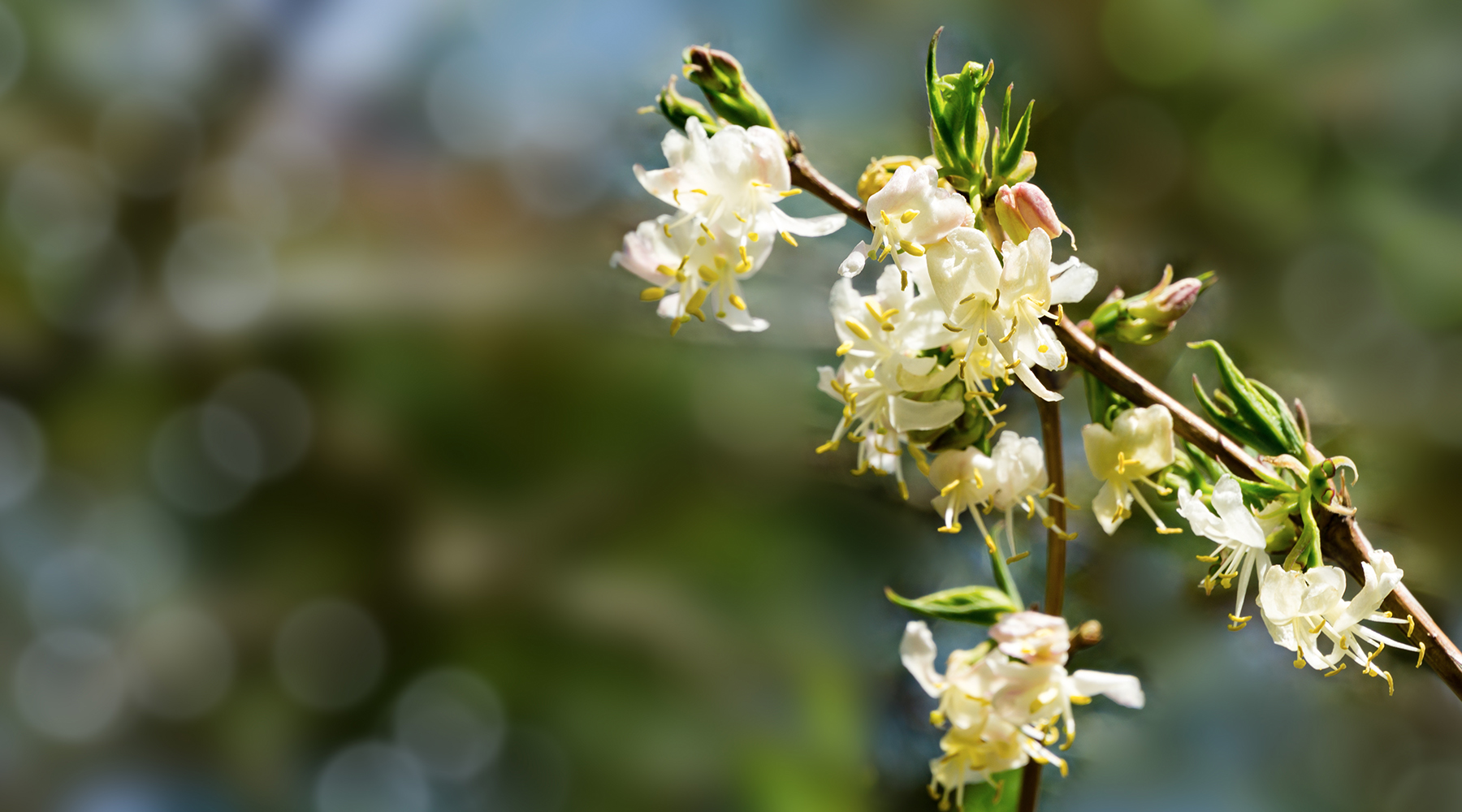
Honeysuckle Winter Beauty – this spreading semi-evergreen shrub is a must-have for your winter garden, producing a multitude of highly fragrant creamy-white flowers with bright yellow anthers from November to March, that offer a sweet, jasmine-like fragrance.

Wintersweet – this slow-growing shrub is aptly named for its highly scented, pale yellow waxy flowers with purple centres, which appear on bare stems from December to February. Their sweet and spicy fragrance is what makes this plant a real winter garden showstopper.
January
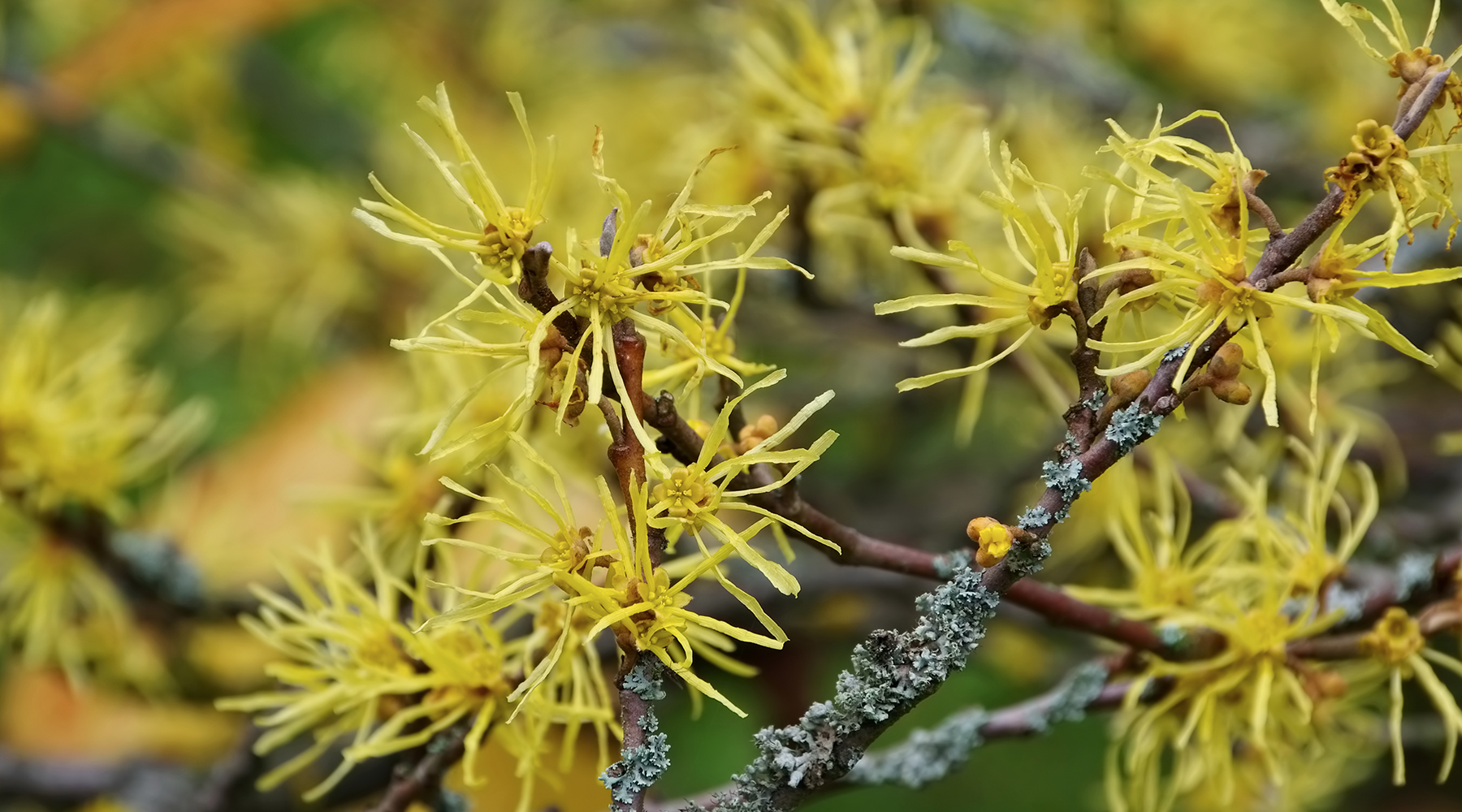
American Witch Hazel – the Hamamelis x intermedia Pallida variety produces spidery sulphur-yellow flowers boasting a soft, sweet and spicy fragrance between January and February.
Winter Jasmine – a medium-sized deciduous shrub that produces small yellow trifoliate flowers that appear along long arching bare branches from November to March. Their light aroma is fresh and clean, like crisp winter air.
February

Daphne bholua – also called Nepalese paper plant, this evergreen shrub boasts long, oval leathery leaves and clusters of pretty, pink and white, highly fragrant flowers that offer an intense fragrance in February and March.
Mahonia – an easy-to-grow evergreen shrub that boasts tough, spiny leaves and bright racemes or clusters of brilliant-yellow, fragrant flowers, which appear from December to February, offering a gentle fragrance reminiscent of lily of the valley.
Sweet Box – a bushy evergreen shrub with leathery leaves and small highly scented creamy-white flowers that offer a power-packed sweet honey fragrance from December to March, followed by glossy, black berries, great for wildlife.
For more ideas, inspiration, plants, tools and more visit our garden department page now.
]]>The summer is finally here, but how can we make the most of our gardens so that everyone, no matter their age or ability, can enjoy it? Thankfully the answer is easy. There are many ways to create a perfect outdoor living space so that you can sit back with your favourite tipple or cuppa and enjoy the company of friends and/or family, or just find a great secluded area for some prime ‘me time’.
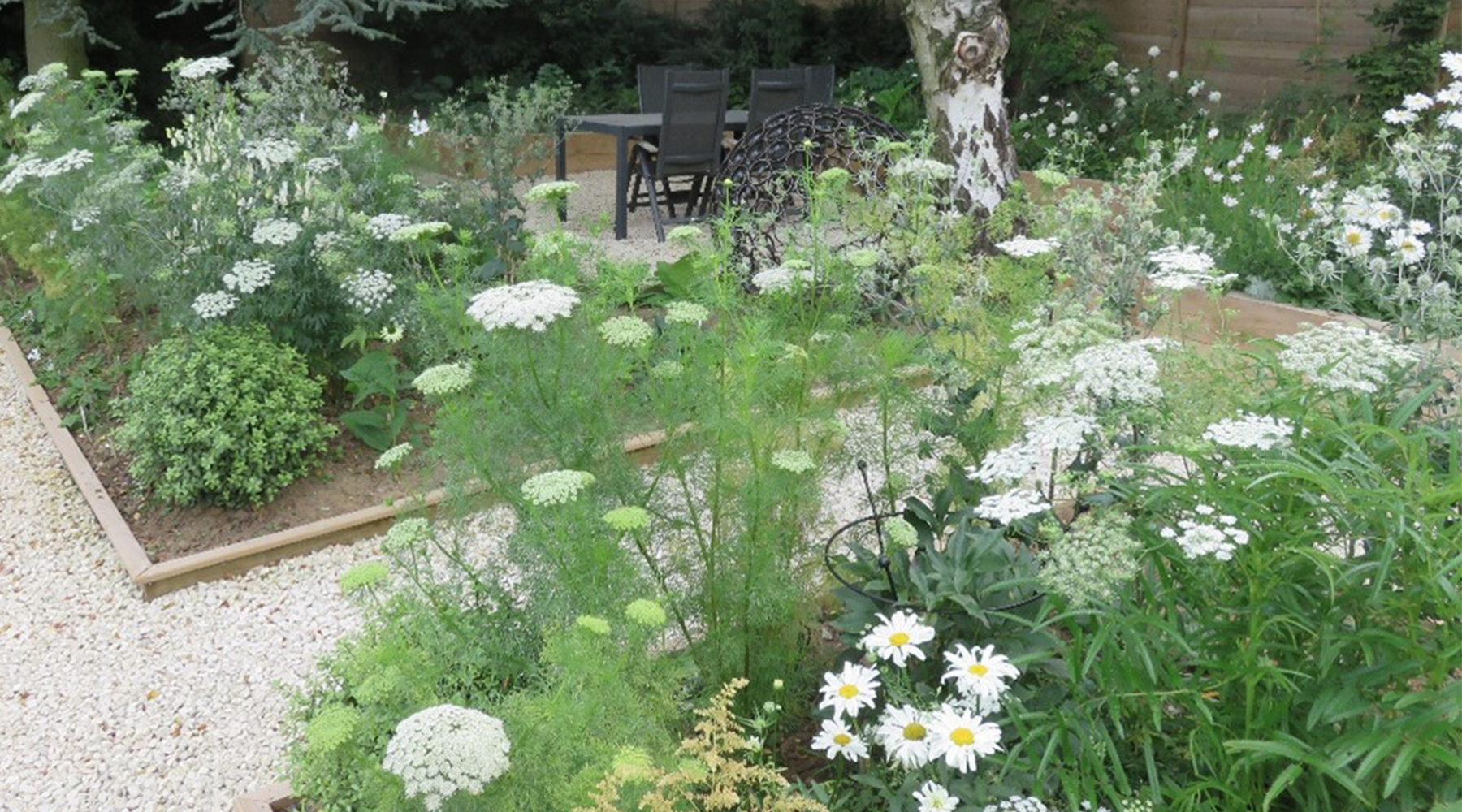 A secluded spot perfect for a morning cuppa away from the kids
A secluded spot perfect for a morning cuppa away from the kids
I’m here to tell you that with some planning and taking your time you can create the wonderful outdoor space of your dreams. Remember every garden is a reflection of the owner’s or gardener’s personality and this is why I love visiting gardens, because even if a garden style such as a cottage garden has been followed by three or even 100 people, each one will be completely different. That’s why gardening and gardens are so magical.
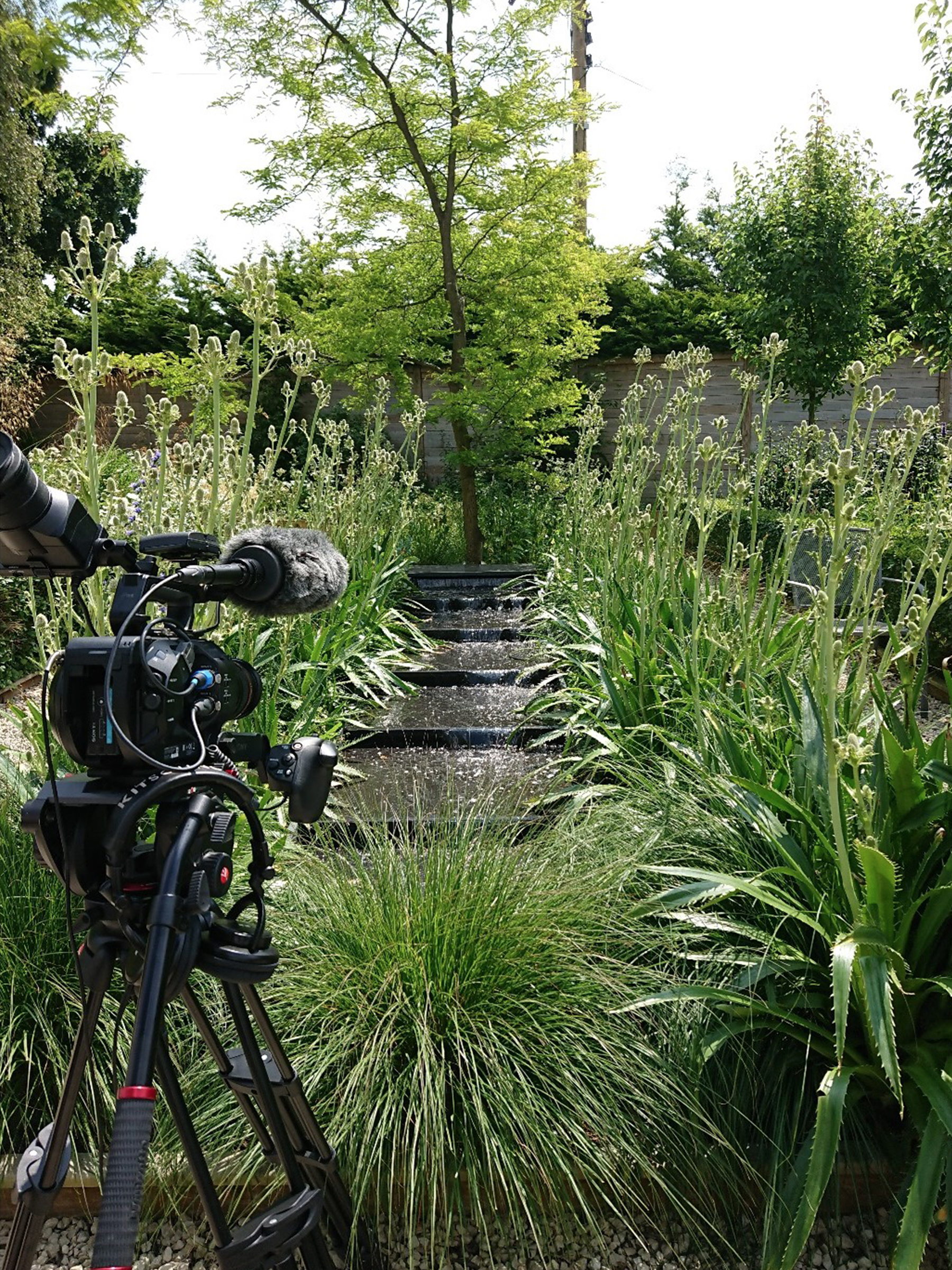 Water can bring a garden to life
Water can bring a garden to life
It doesn’t matter if you have a large or small garden, the principles are just the same. The best designs keep materials, plants and decor simple and coordinated, for a cohesive look. ‘Mirror, mirror on the wall… and a garden full of symmetry’. Not quite the saying, but when designing outdoor , it’s best to work to a concept of balance, which is achieved in three basic designs: symmetrical, asymmetrical and radial.
- If the left and right hand-sides of the space consist of the same , then balance is considered symmetrical. A symmetrical garden can however look boring, predictable and static, so by following some simple rules your outdoor space can look stunning this summer.
- Keep the material palette simple and use the Golden Ratio (Sectio Aurea), which works out at c.1.62. It is a ratio that can be found in nature, art and science. The strong dominant lines should reflect the Golden Ratio.
- Avoid the garden looking monotonous by introducing an area that is mirrored along the opposite axis. Also, make the journey through the outdoor space exciting by unveiling new and exciting details, perhaps with something less formal as the ‘climax’, for example an old mis-shaped bonsai.
- A formal space with pairs of identical elements immediately gives a sense of balance and can be stunning as a sharp contrast to informal spaces. But, if a balanced symmetrical garden is not for you then you can still have an asymmetrical garden that is balanced, i.e. a large specimen tree on one side can be balanced by three smaller ones on the other.
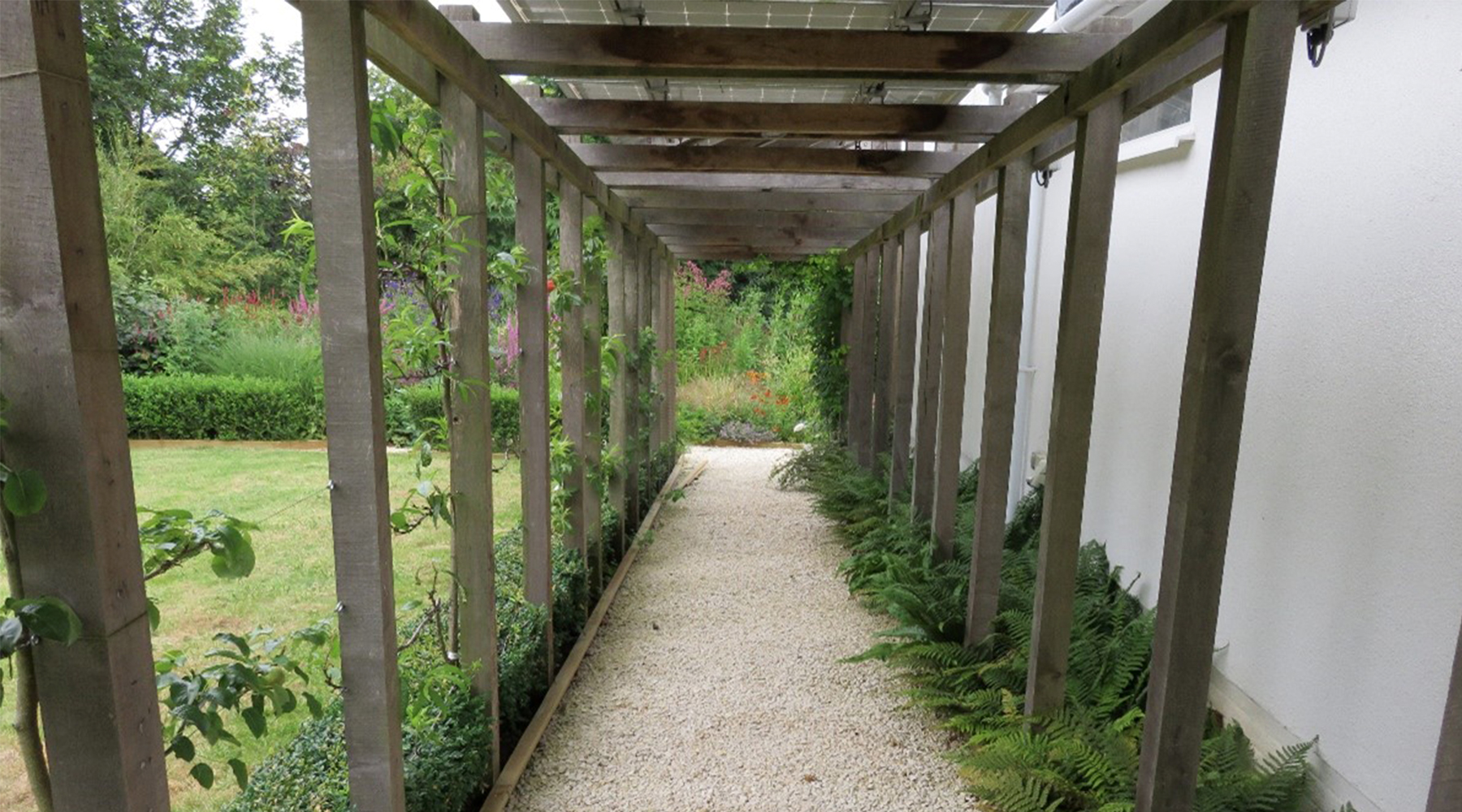 The simple repetition and symmetry of this pergola leads the eye to another part of the garden
The simple repetition and symmetry of this pergola leads the eye to another part of the garden
Of course, a garden must have plants and depending on your budget and willingness to garden it is essential to select plants that will create the look you are after. In other words, if you want a tropical garden then keep to tropical plants, such as Cannas, tree ferns, gingers and large-leafed plants like Fatsia. On the hand, if you want a colourful cottage garden then fill your pots and borders with a cacophony of colourful plants, as well as edibles, from bedding plants to perennials, shrubs to trees. If you want to sit back and look at the garden, and be more of a passive gardener, as opposed to an active gardener, then look for low-maintenance plants such as flowering shrubs and low-growing plants that don’t need staking and fussing over.
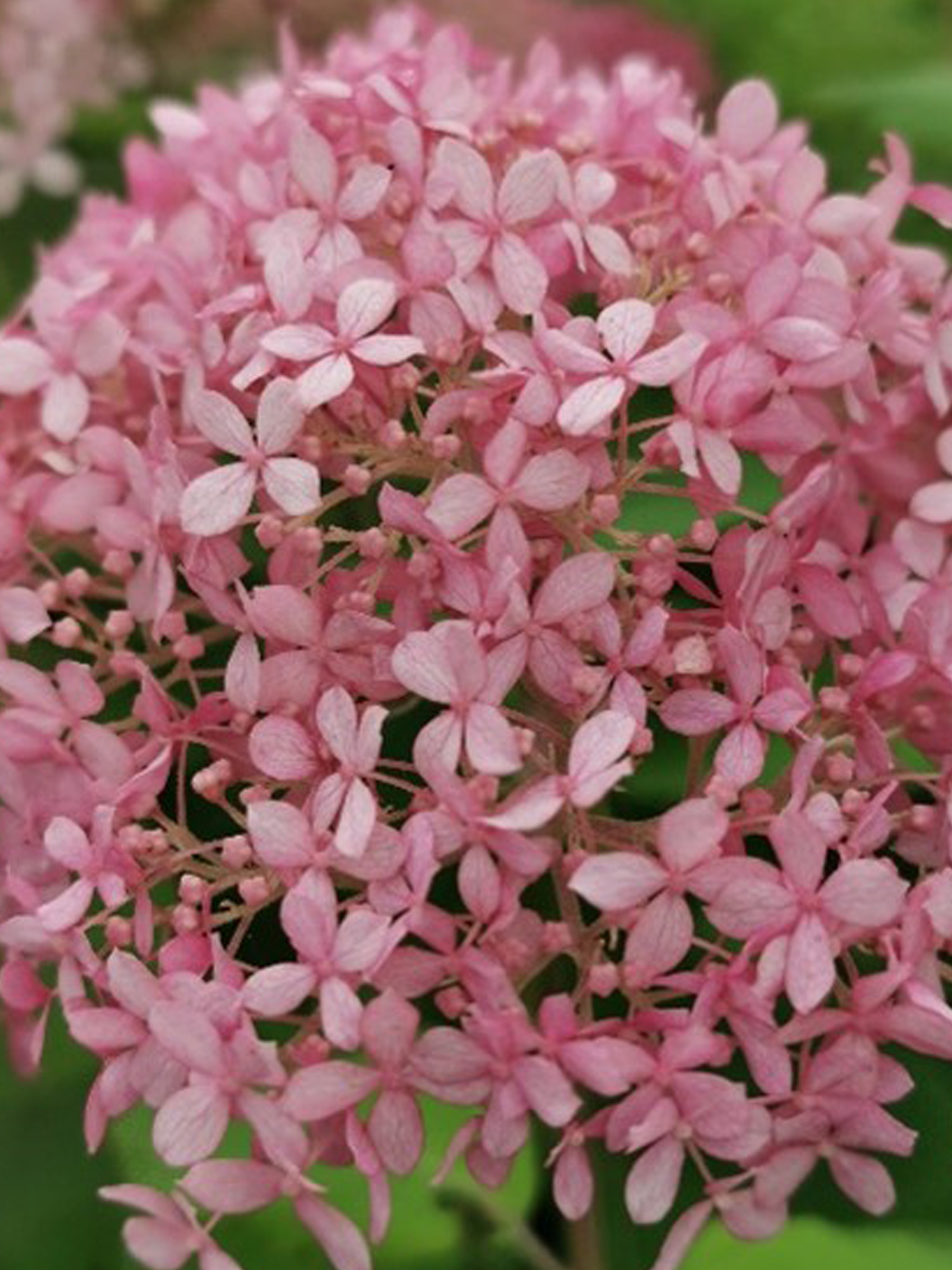

 Roses and hydrangeas are great low-maintenance flowering shrubs
Roses and hydrangeas are great low-maintenance flowering shrubs
Do you like a particular style of gardening, such as cottage, prairie, sensory, seaside, tropical or modern? Understanding the look and feel of each is paramount for getting it right. There are thousands of images online showing different garden styles. Start collecting them and produce a mood board. Sometimes it might be the smallest detail of a handcrafted door handle that you like – the shape, the craftsmanship, the material. This, in turn, could steer you towards and Arts and Crafts-style-garden, for example.
Then think about the materials that you want to use. Natural materials, such as stone, gravel and wood lend themselves to traditional styles, whereas clean-cut, porcelain tiles, a monochrome palette or strong architectural features and modern sculpture are better for modern or contemporary gardens.
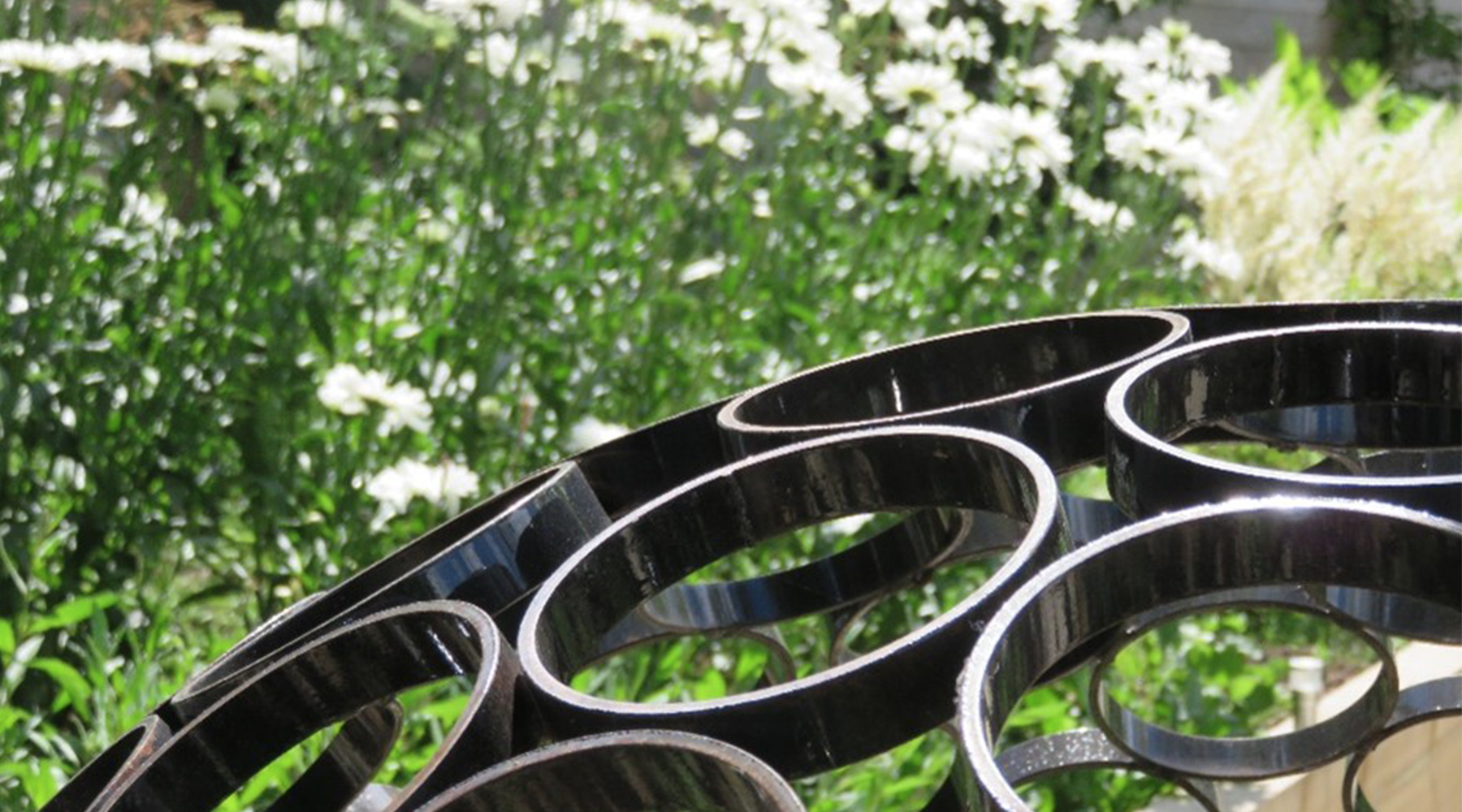 Modern sculpture and garden ornamentation give a garden a finished look
Modern sculpture and garden ornamentation give a garden a finished look
Remember, there are no rules other than your own. You may even like to mix up materials and aim for an eclectic look. January, February and even March are the perfect times to sit down with a cuppa, a blank piece of paper or your laptop and get your little grey cells working. Sometimes, paper cut outs in different shapes, representing a table and chairs, a shed, etc can be moved around until you find the right balance.
Of course, it’s not only flowers that are growing at this time of the year, but weeds will be sprouting up all over the place unless you get on top of them. I like to garden organically, so when I heard about Richard Jackson’s Double Action Weedkiller I had to give it a go. On a warm summer’s day this will kill your weeds in a couple of hours (depending on the size of the weed). And I love the fact that it is based on a plant extract from the pelargonium, known as pelargonic acid.
To keep your plants looking their best you will need to feed them and provide them with the best situation to grow. Feeding your plants will ensure healthier and stronger plants. Good compost and soil is also essential. Remember that plants such as rhododendrons, azaleas, blueberries and heathers will need ericaceous soil as they are acid-loving plants. So get to know your plants and provide the right growing conditions for them.
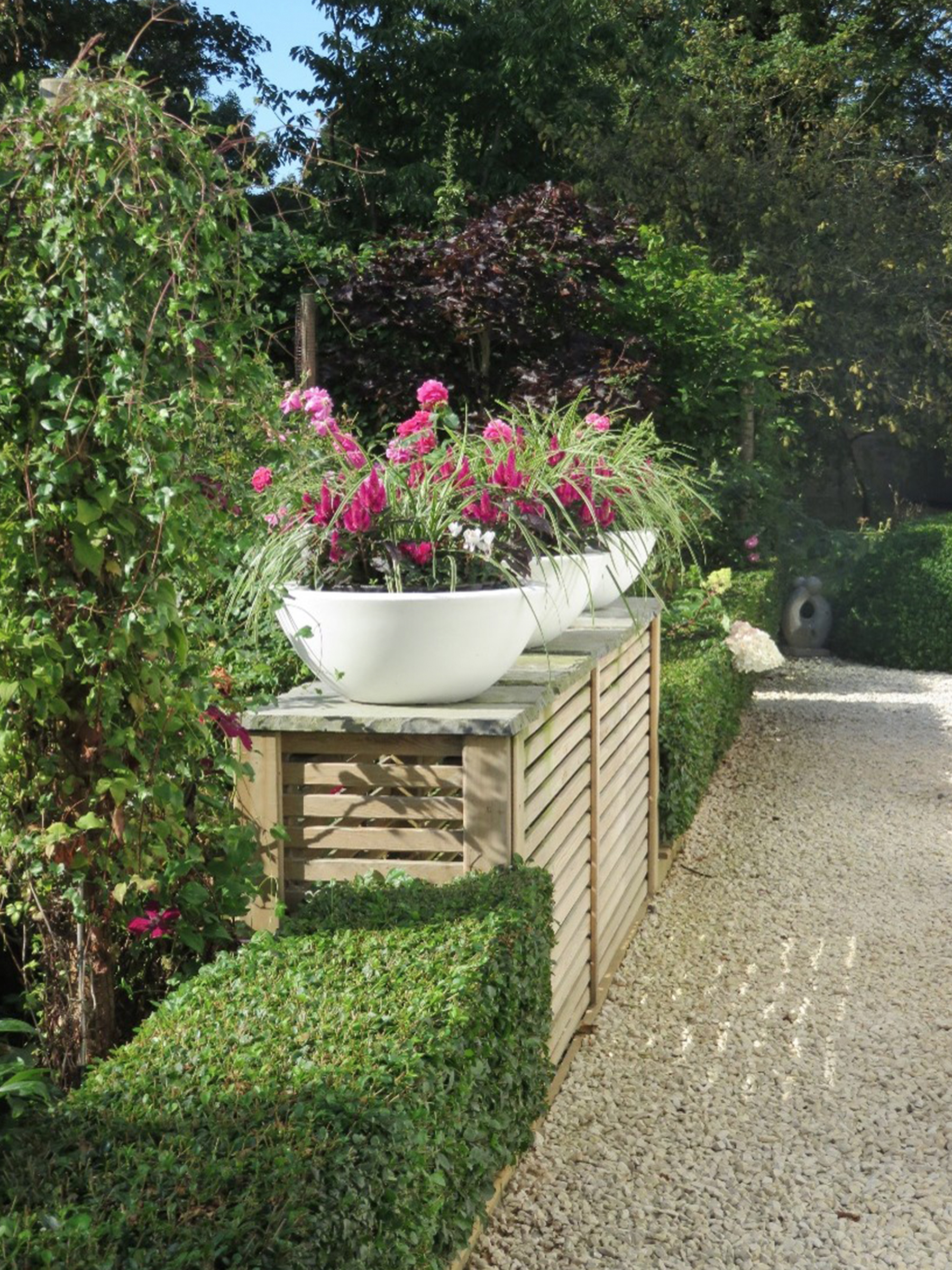 Knowing what plants will grow in pots and containers is key to magnificent displays
Knowing what plants will grow in pots and containers is key to magnificent displays
If you like to sit down when gardening then consider using containers, pots and raised beds for maximum effect. Remember though that pots and containers will need to be watered more often than plants in the ground, but you can add different height containers to suit your style and needs. Raised beds, raised planters or raised tables are a great way to bring the garden up to a comfortable height.
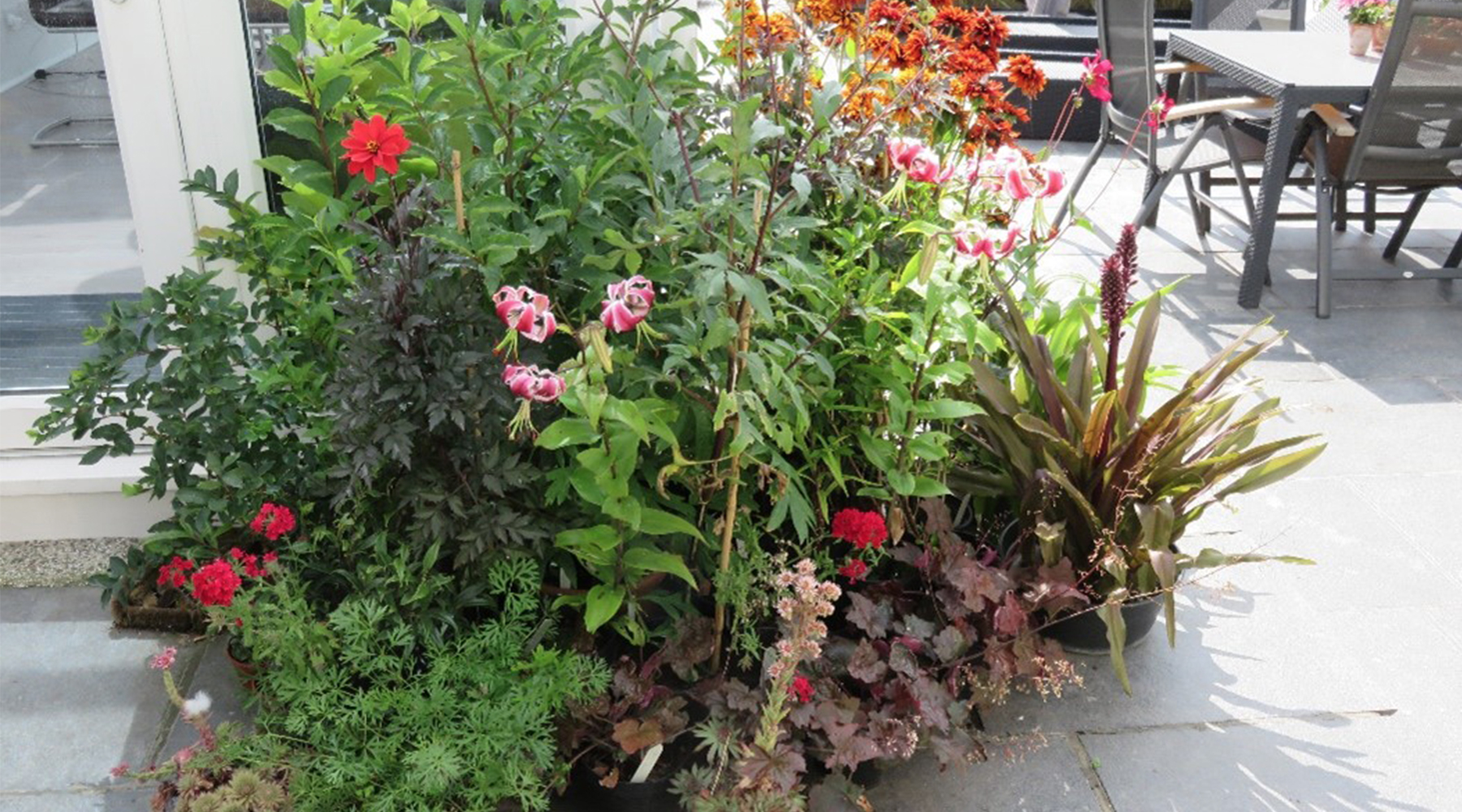 A collection of pots by the back door softens the patio, bringing colour, scent and texture up close and personal
A collection of pots by the back door softens the patio, bringing colour, scent and texture up close and personal
If you position these around a seating area then when entertaining you can be surrounded by scent and colour, or if cooking on a BBQ then edibles and herbs in containers of any shape and size make them accessible. There really is nothing better than picking your own produce or herbs and adding them straight to the BBQ.
Of course, your patio, terrace or balcony will look great with seating in some shape or form. If your space is small then consider two key pieces such as two comfortable chairs or folding chairs and tables, which can be put away to one side when you need to use the space. If you have the space then why not create an outdoor room with seating, dining table and chairs perhaps with outdoor rugs, feature lighting and garden décor to really set the scene.
In addition, destination spots within the garden are a great way to entice you into the space. A pathway leading you into a space creates a child-like fascination and curiosity. Ideally pathways should be wide enough for two people to walk side-by-side, and if any family member or friends use a wheelchair, scooter or walking frame then you need good wide turning circles. Also, a raised edge to a pathway stops wheels and feet from ending up in a flower border. A couple of chairs with a solar light positioned in a secluded area of the garden can become the perfect oasis. Your garden becomes a fully immersive experience. Throw over a blanket and you can use the space even in the autumn or on wintry evenings. If you can enjoy your garden for 12 months of the year, then it really will become an additional room to the house.
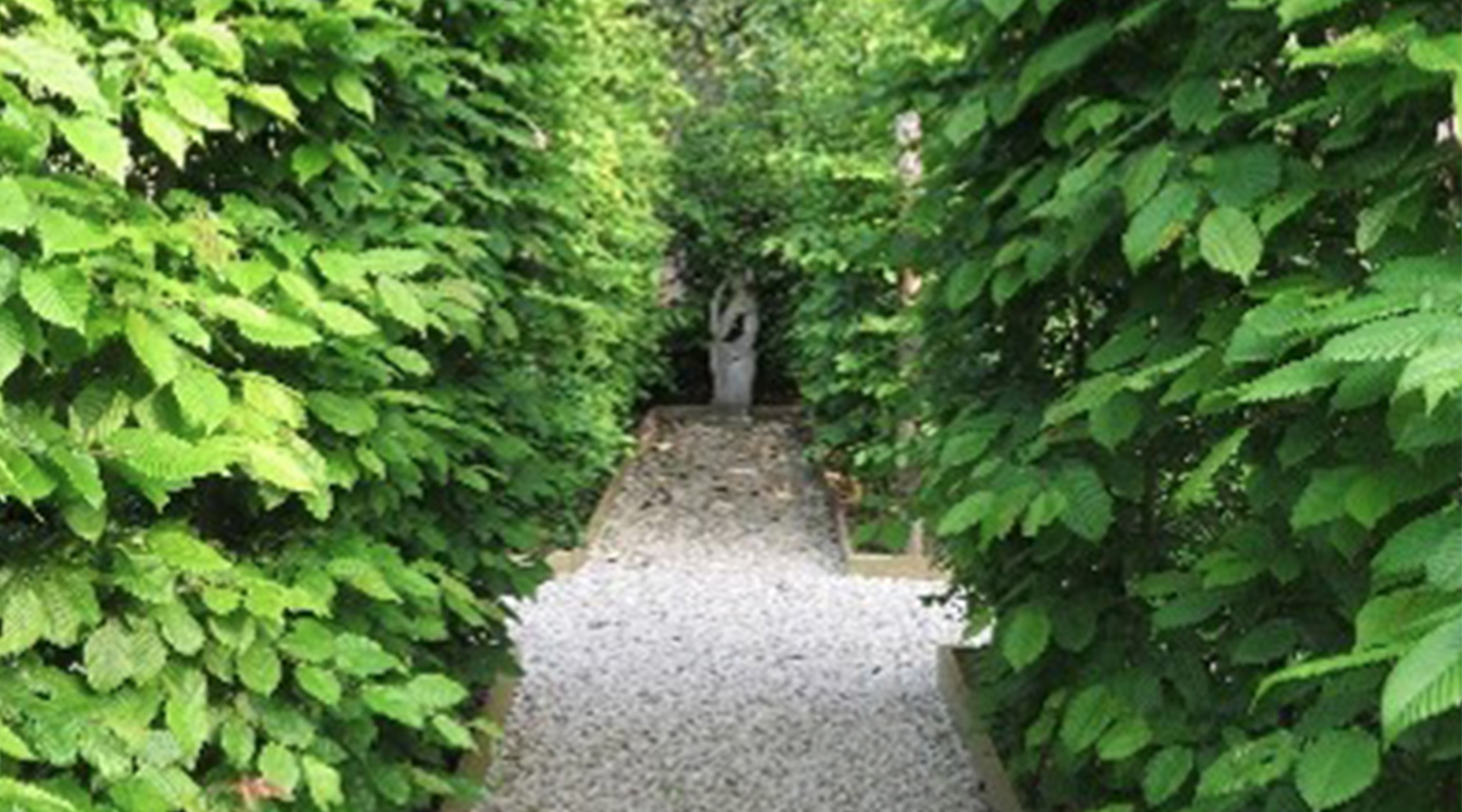 Pathways lead the eye to different areas of the garden. A piece of sculpture at one end of a long walk adds a focal point
Pathways lead the eye to different areas of the garden. A piece of sculpture at one end of a long walk adds a focal point
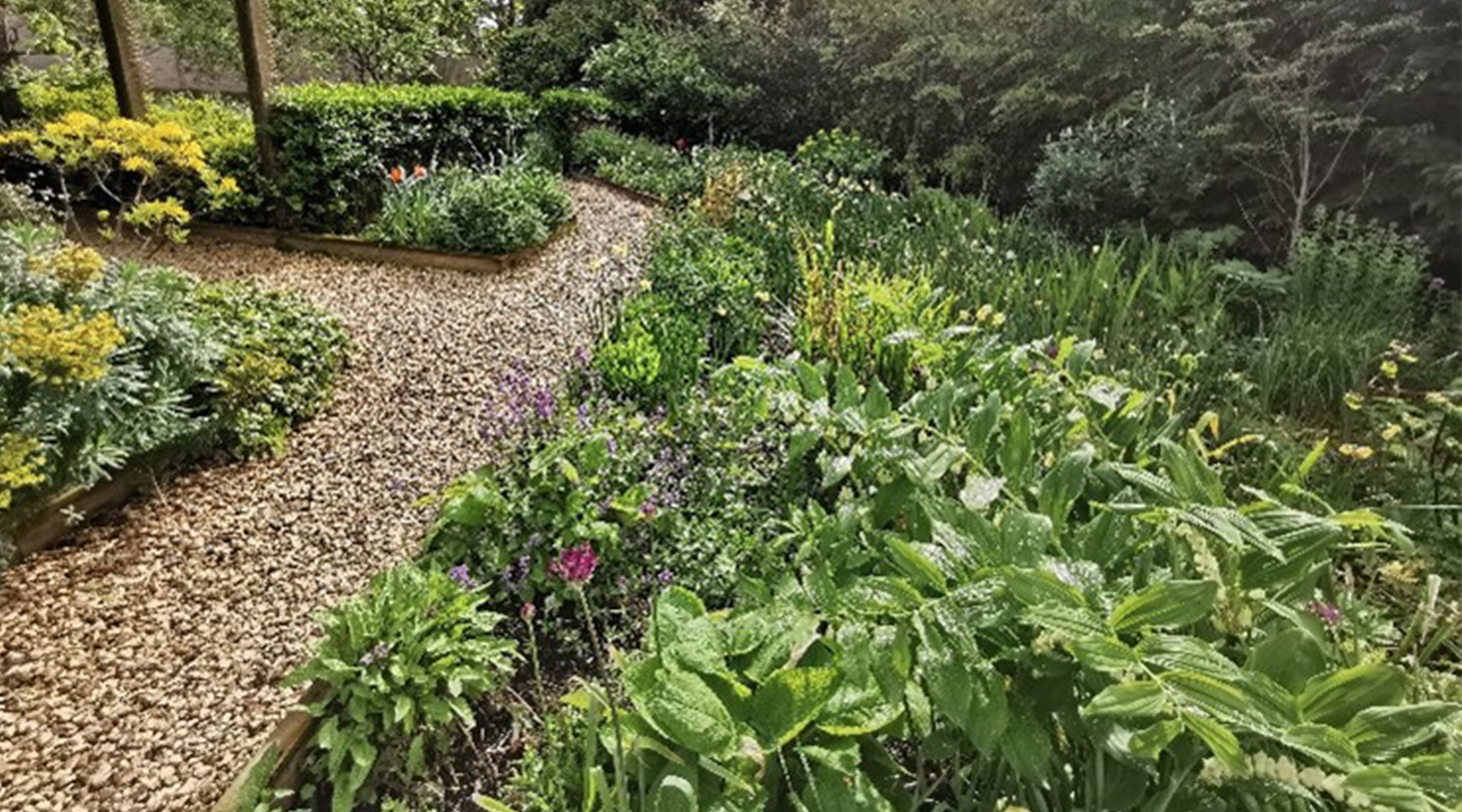
Lighting brings a garden to life at night. Here in the UK we have a lot of dark hours, dull and grey days, and ideally you want to look outside and still enjoy your garden. Lighting key pieces will add drama and focal points, and garden becomes an immersive experience.
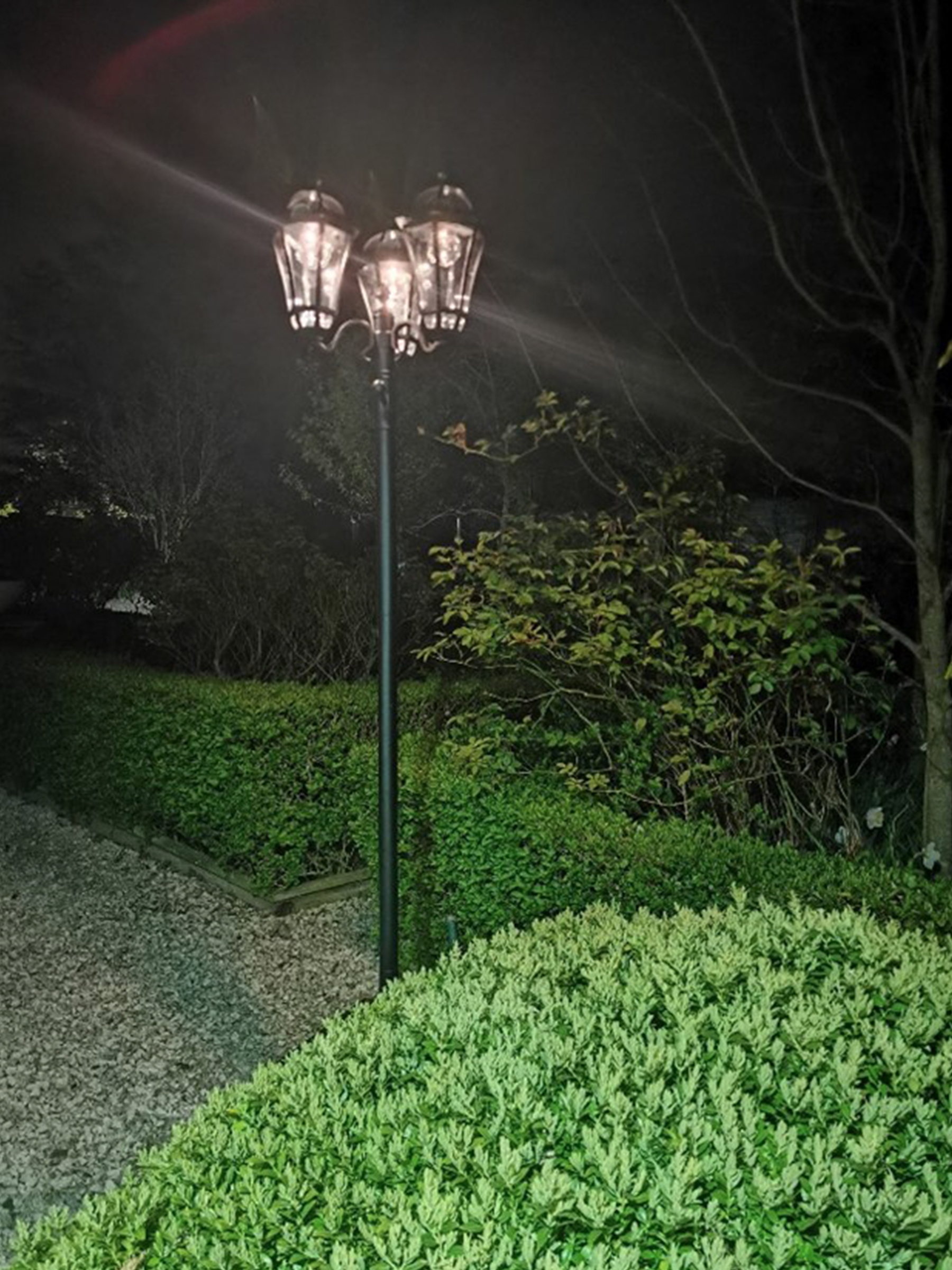
Also, solar lights, such as Luxform’s Kensington lamppost, which I have near my rose borders, require no wiring, and can be moved around easily.
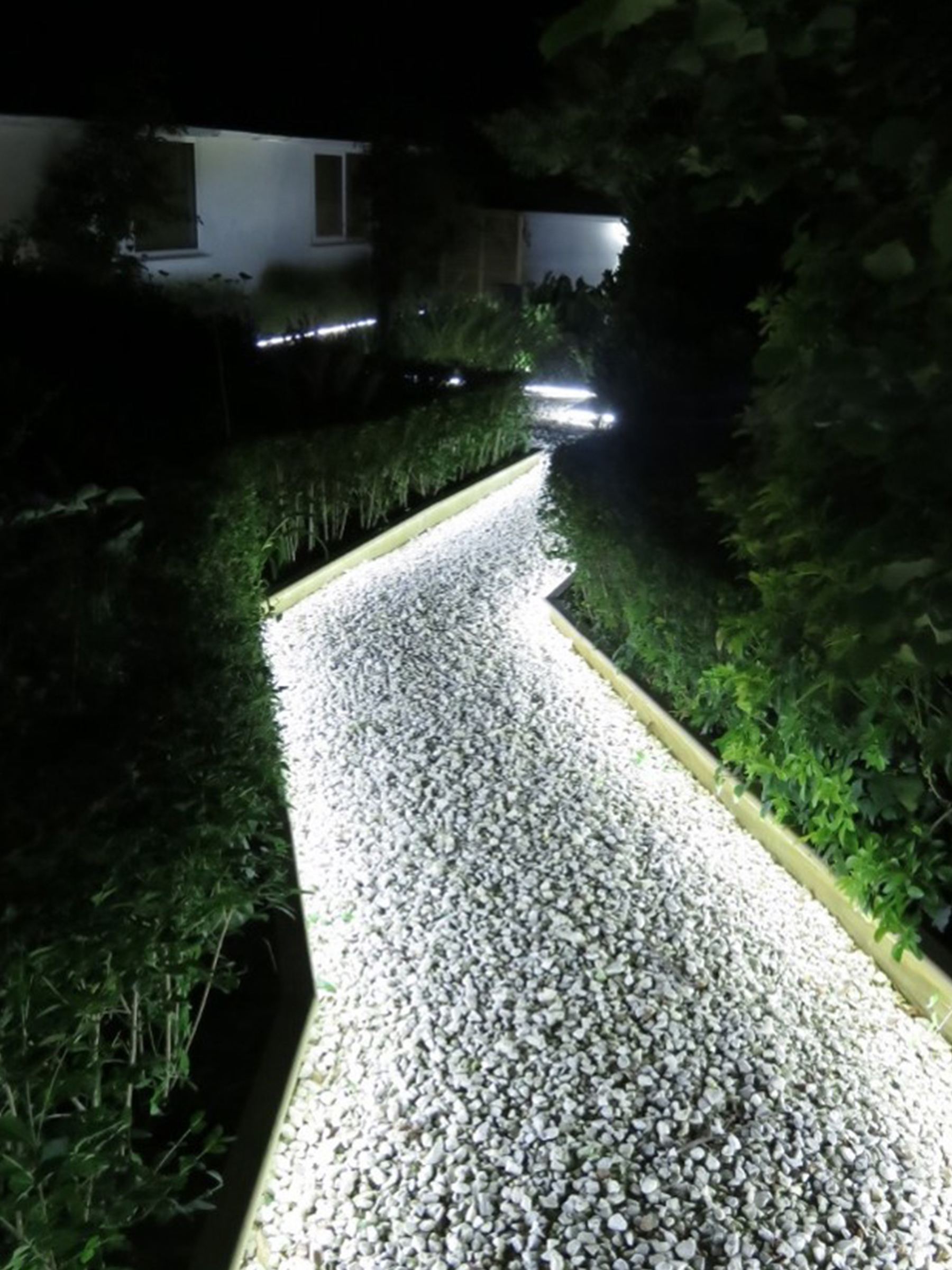 Hidden LED strip lighting in the path’s edging boards illuminates the gravel without causing glare
Hidden LED strip lighting in the path’s edging boards illuminates the gravel without causing glare
Lighting within a border, partially hidden from sight, will add shadows and silhouettes which will be dramatic and bold. However, party lights and string lights can be used in a fun way, whether for children or for adults.
If you like the idea of growing veggies or fruit but are limited on space, then consider a vertical garden. There are several on the market now, some even come with individual pots for plants so you can swap and change them around to get maximum sunlight.
All vertical gardens need an irrigation system or either leaky hose or small irrigation pipes and nozzles, as well as a water collecting reservoir at the bottom. If you use a solar-powered pump, you can put the watering onto a timer during the day, and even add liquid feed to the reservoir. As the pump starts to work the water and feed will be forced through the pipes and onto the soil or coir. Vertical gardens can be quite high maintenance, but they can be made up of either ornamental or edible plants.
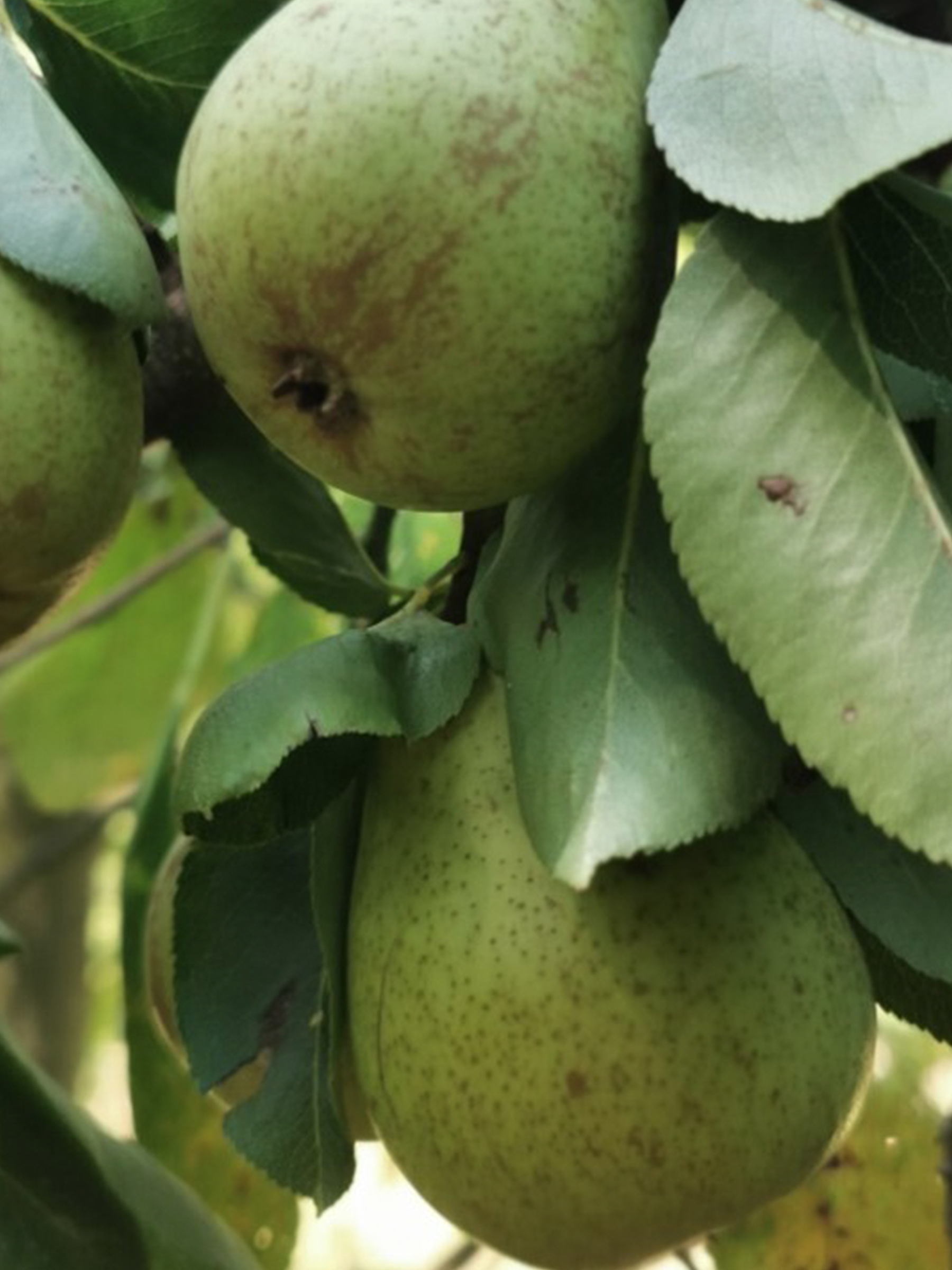
 Vertical growing, espaliered fruit and herbs and vegetables make for an interesting garden, especially when tight on space.
Vertical growing, espaliered fruit and herbs and vegetables make for an interesting garden, especially when tight on space.
If, however, your green fingers hate being idle, then we’ve created a list of five mini garden projects to keep you occupied outside this summer. Whether you’ve got a day or two to spare, or you fancy getting your gardening gloves on something a bit more challenging, there’s a project to suit.
Go potty
If your deck is looking a little sparse or you want to add some structure, interest and architecture to your garden, then pots and containers are the way to go. Wonderfully versatile, they can be moved around your space depending on the season, and with a multitude of different sizes and shapes, from Romanesque urns to cattle troughs and old baths, containers are a sure-fire way to add a whole new look to your outdoor space.
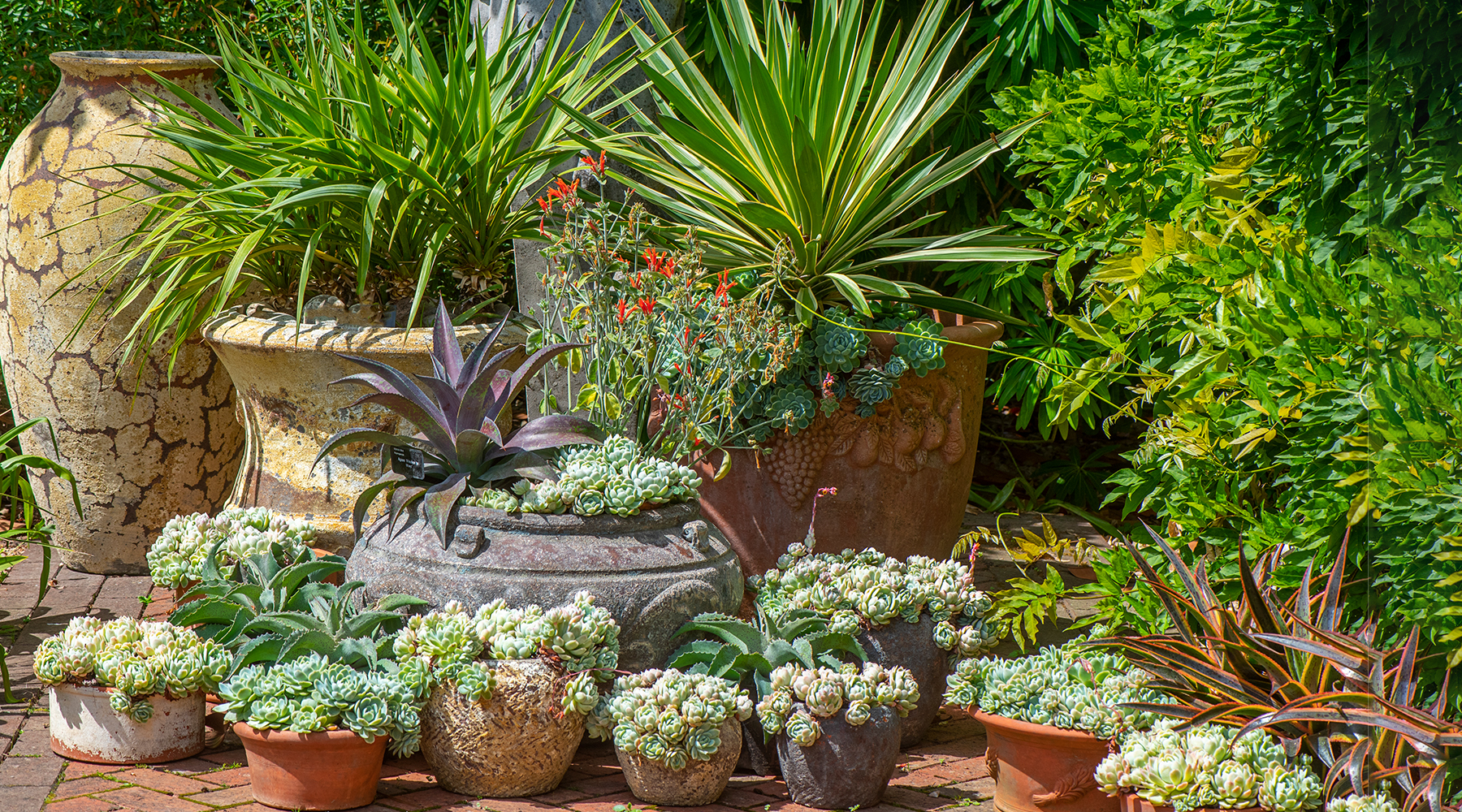
To make this into a real project, you need to think the more the merrier and choose lots of different sizes that can be grouped together to create a visually striking focal point. You can either select a theme or colour scheme to run throughout your display, like classic terracotta or elegant sandstone, or be eclectic. Mix and match different ideas, search out flea markets, boot sales and antiques fairs to find beautifully crafted, pre-loved pots that are weather-worn and wonderful.
When it comes to what’s inside your pots, an exciting mix of plants is key. From trees and bamboos that offer height and shade, to manicured shrubs and billowing grasses for structure, all the way down to bedding plants – you need variety in your pots. When they’re all huddled together, the assortment of colours, textures and sizes will make a magnificent display and one that you can change up throughout the seasons.
Up the garden path
One way to make a dramatic change to the look of your outdoor space is by adding a pretty pathway. Move aside cement mixers and paving slabs, this is a DIY project, we’re talking reclaimed-brick walkways leading up to the garden shed, mosaic stepping stones to add colour and texture, or gravel paths running up to the backdoor (but not quite all the way, no one wants a gravelly kitchen floor!)
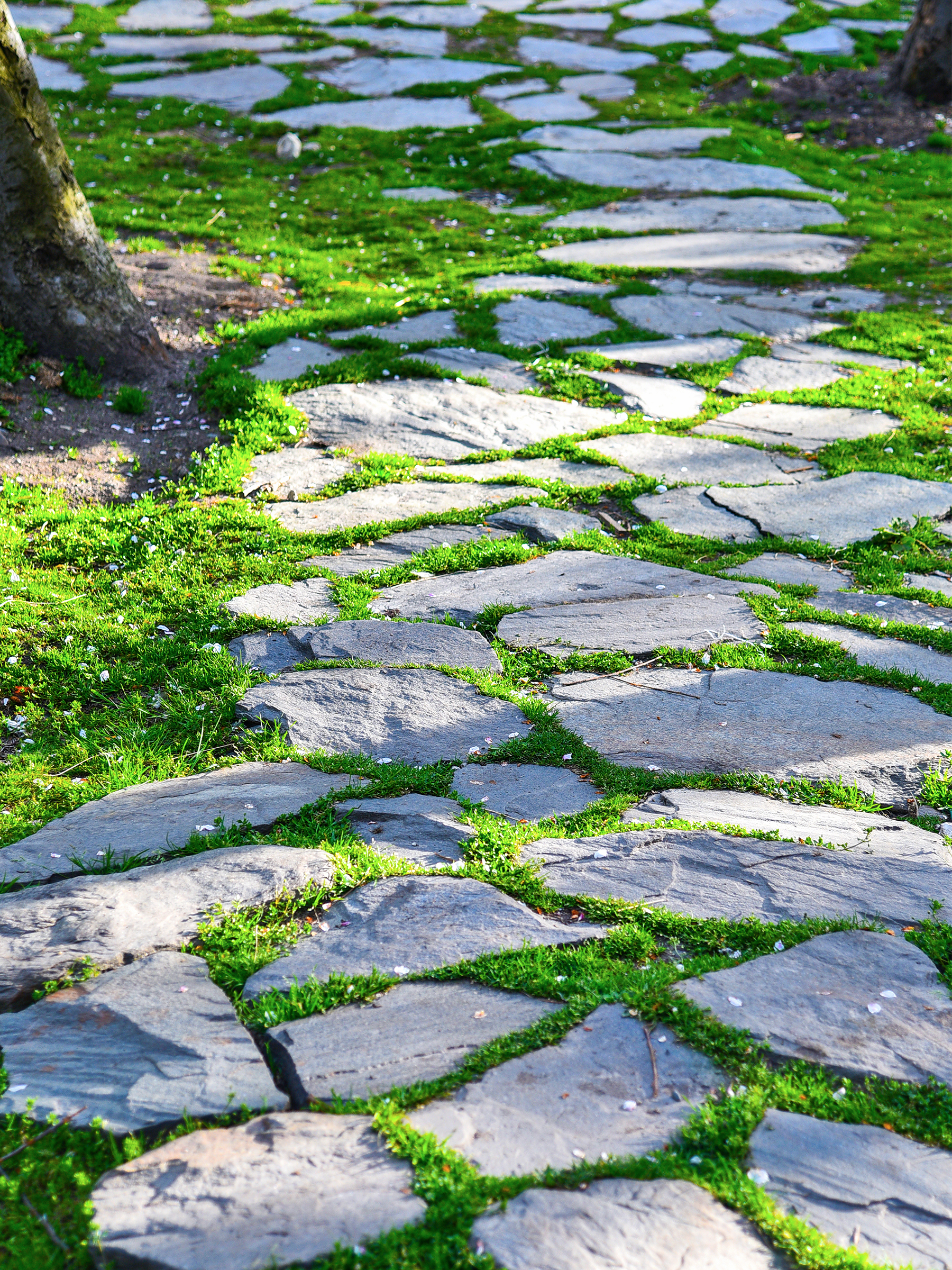
If steppingstones have you jumping for joy, trail them across your lawn, scatter them among your vegetable patch for easy harvesting or use them to lead your guests to the secret hideaway at the bottom of the garden. There are lots of different styles you can consider too. Beautiful mosaic-print tiles look fabulous laid one after the other at angles and surrounded by low-growing rockery plants like thyme or house leeks.
For a rustic look, channel inspiration from the beautiful National Parks of the Lake and Peak Districts with natural limestone. Gravel paths, favoured by everyone from stately home gardeners to Mediterranean homeowners, can be a stunning way to give your garden a perfected path look. It’s not tricky, but there is some heavy lifting involved so get the kids/grandkids involved if you can!
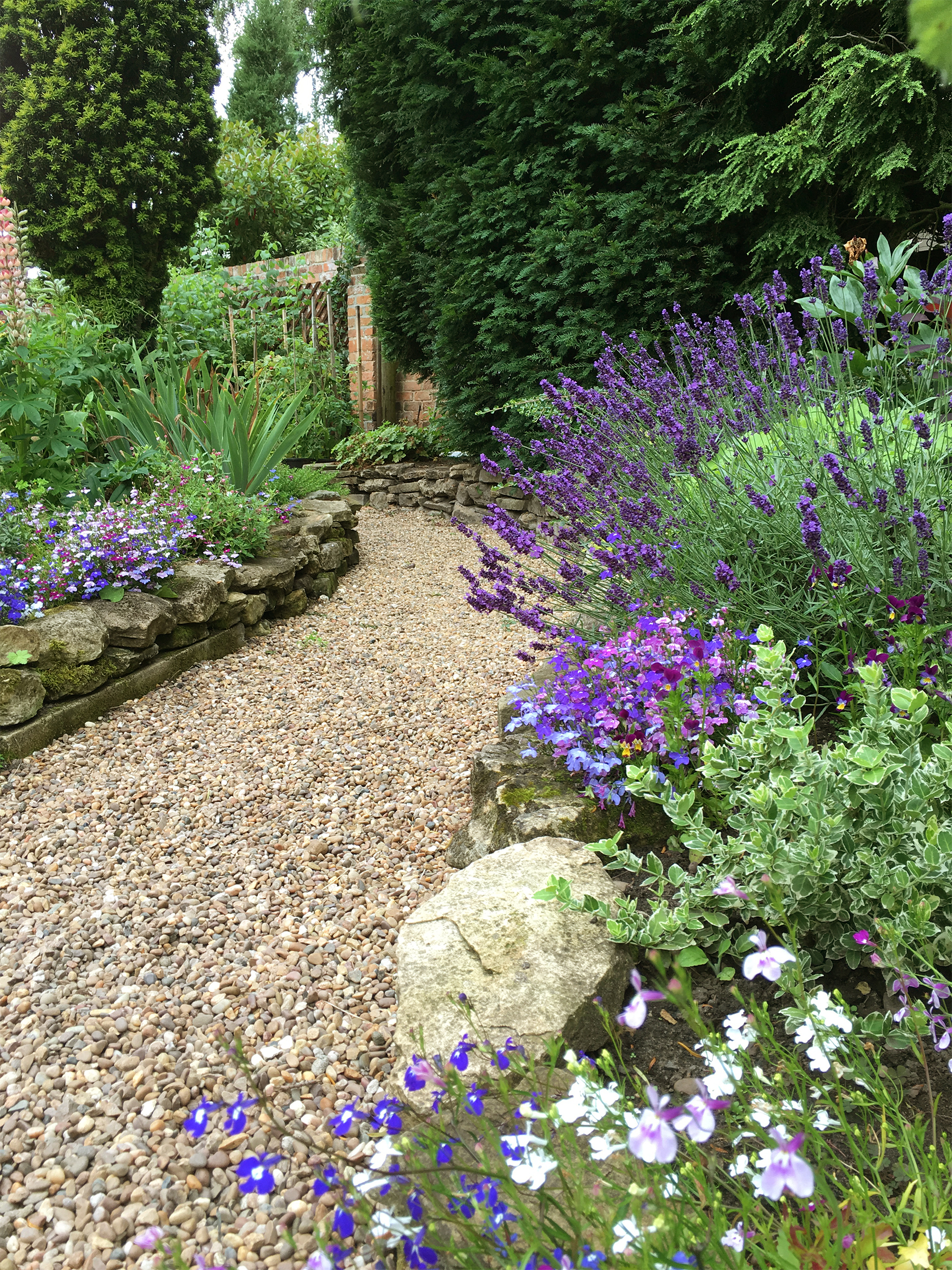
Once you’ve decided where your undulating path will take you, (the best thing about gravel paths is they don’t have to be straight) mark it out with string and then dig out a trench a few inches deep by skimming off the topsoil or turf. Then flatten and compact the earth underneath and add your edging. Larger stones or treated wood look lovely but can shift about over time, while steel and plastic options are also available that sit flush between the gravel and the earth either side. Then add a layer of hardcore and lay down your weed membrane or landscape fabric, and finally shovel on your chosen gravel and rake smooth. Ta-dah!
Get composting
Not the most glam of garden projects, granted, but such a rewarding one if you do decide to build your own compost heap. Of course, there are bins you can buy and set up in your garden and you’re good to go (with instructions), but this is project gardening, and we can DIY our own compost heap, right!?
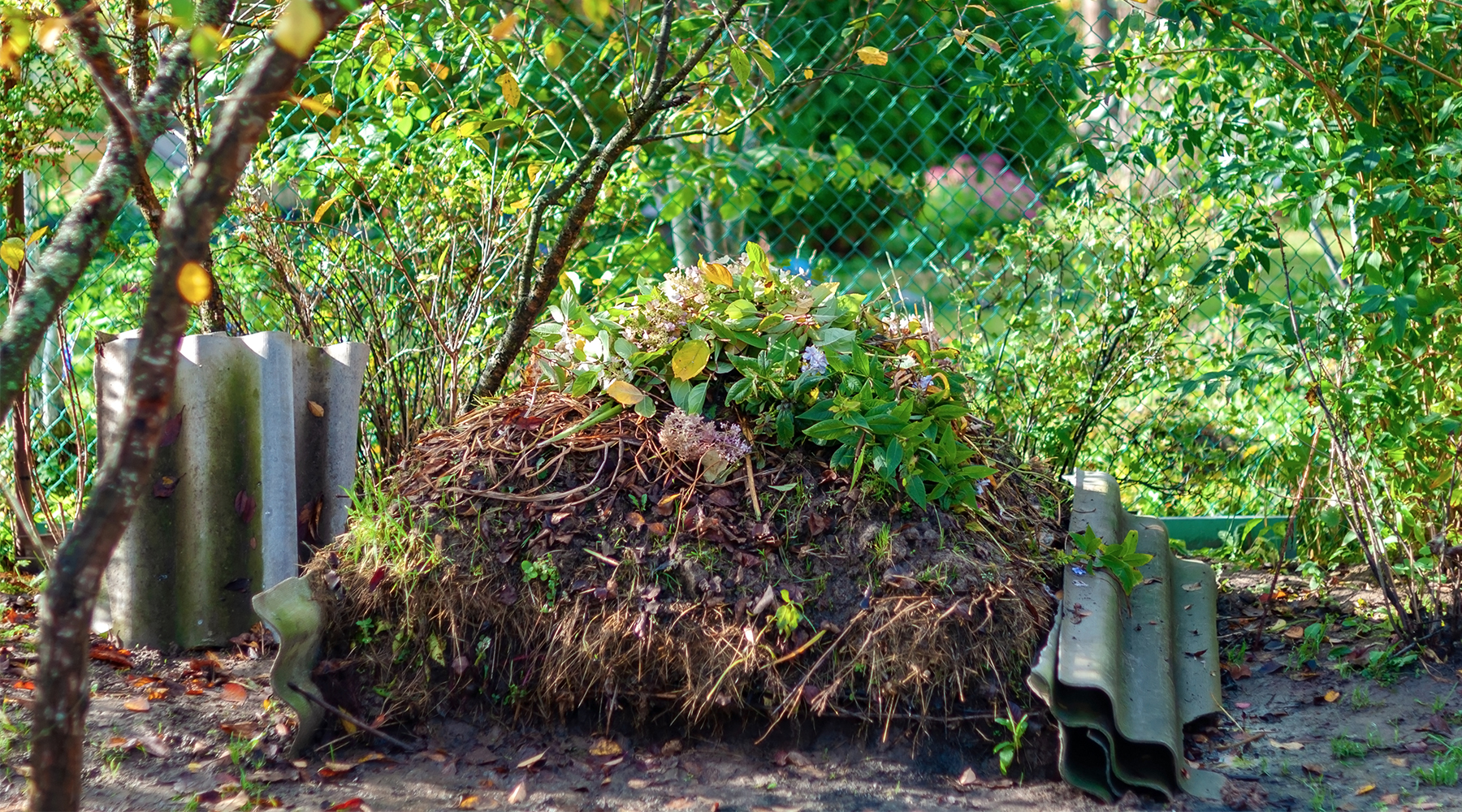
If you have a big outdoor space, you don’t really need to do much more than start adding your garden and kitchen waste to a pile in a secluded corner. But if your garden doesn’t have the room for all that free-flowing goodness, a more structured heap is in order. First, decide on your compost site (away from the house for obvious reasons), then gather the essentials together. You will need three wooden pallets, some stakes, garden wire and a mallet.
Compost heaps can sit directly on the ground, so all you need to do is angle your three pallets on their ends to create a horseshoe shape. Keep them in place with stakes inside the pallets using the mallet and then secure with garden wire. A chicken wire wrap around the outside of the palettes is optional. Now you can start to ‘make’ compost, add anything from dried leaves and grass cuttings to vegetable peelings to your heap, and then wait. Soon you’ll have lovely rich homemade compost to add to your pots, beds and borders!
Tackle the tool shed
Whether yours is like grandad’s workshop full of rusty old tools he hasn’t used in years, more of a woodshed with the remnants of old DIY projects, or the place where only the lawnmower gets dragged in and out, the dreaded tool shed sort out is happening!
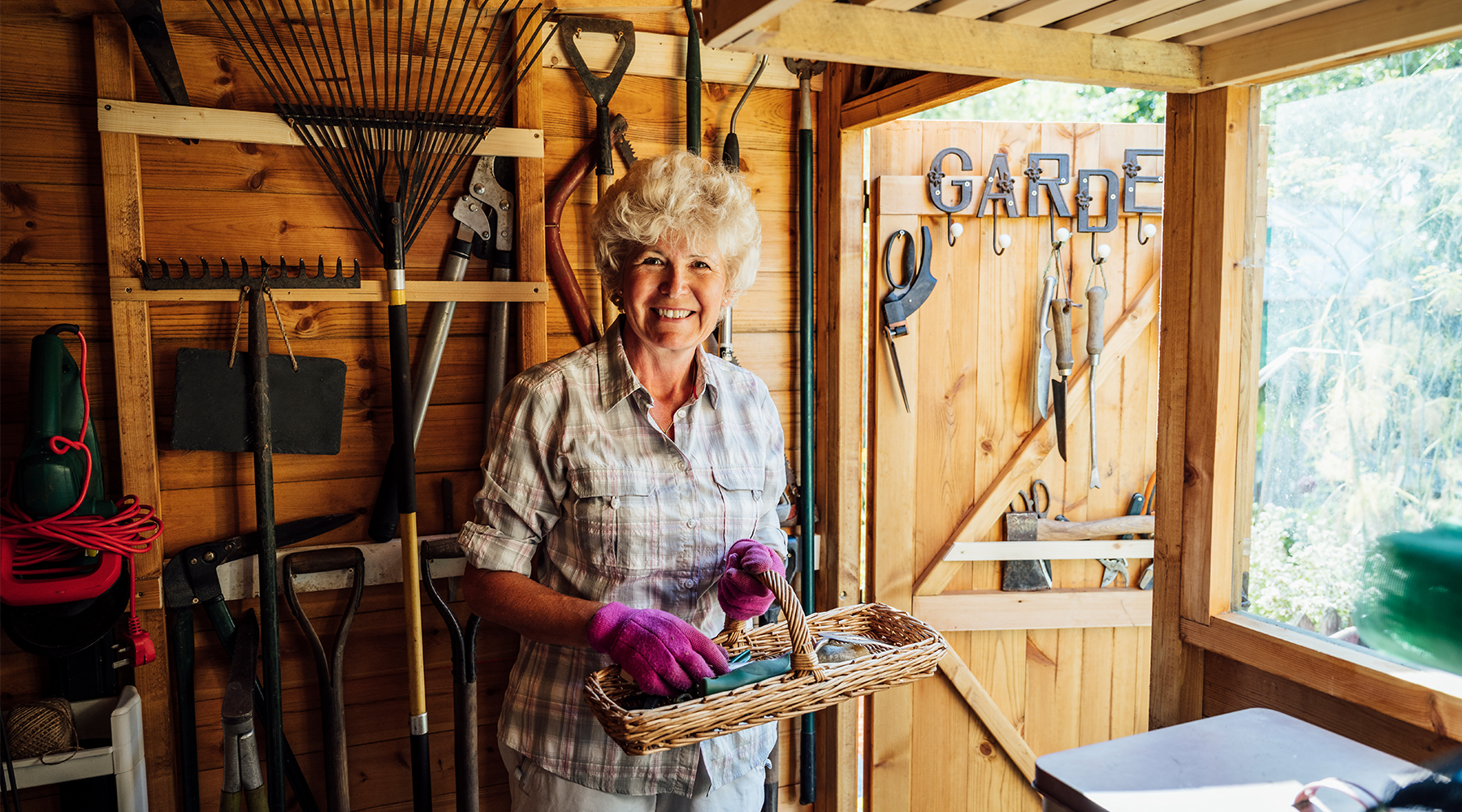
What better time to pull everything out onto the lawn and really have a clear out than when the sun is shining? Dust away those cobwebs, throw away those blunt and rusty tools you no longer use, clear away the old plastic pots and nearly empty bags of compost (you’ve created your own now anyway!) and get scrubbing! Put down a tarpaulin or an old bedsheet on your lawn and lay everything out at once. It’s so much easier to see what you have, and how many duplicates you have too. Do you really need three shovels? (No, you don’t).
When it comes to putting it all back in your shed, try and create a more accessible layout. Use hooks and nails to hang things from beams and walls. An old dresser is a classic shed staple for a reason, shelves are also essential, as are large storage tubs for your bigger garden tools. Keep your hoes, rakes and forks in easy reach and organised by displaying them in stands by the door.
Cosy up your patio
Everyone talks about making your garden an extension of your home, allowing you extra room for entertaining or just everyday living. Only, our beautiful British weather doesn’t allow for us to be al fresco that often…. So, this project is all about making your patio or deck into a sheltered place that is more versatile and able to withstand more of our chillier British days.
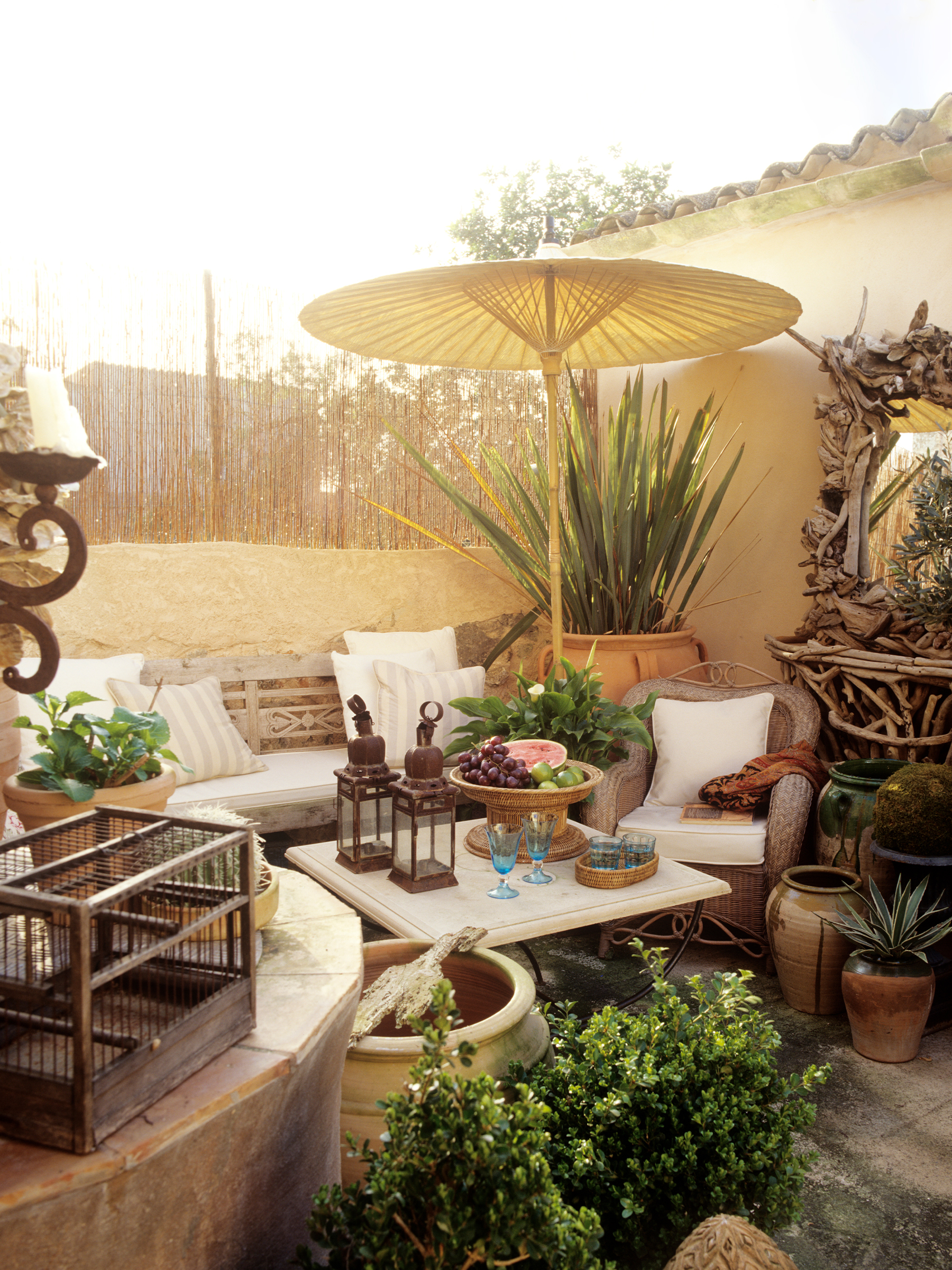
Building raised beds around the outside is a simple way to add shelter as well as colour to your space, and it automatically lends that cosy feeling. Large soft cushions, beanbags (the horror!) pots (see, now that pot display is coming in handy!) and weighty furniture to withstand a breeze or two are real problem solvers. Garden umbrellas can also be multi-functional – not only do they provide shade for sunny days, they’re also fab for keeping off fine drizzle too!
For the final finishing touches to make your space more weatherproof, add lots of candle lanterns, string lights and, if you really want to splash out, an outdoor heater would be perfect. One sure-fire way to extend your home outside is to make sure it’s warm, as well as cosy!
For more ideas, inspiration, plants, tools and more visit our garden department page now.
]]>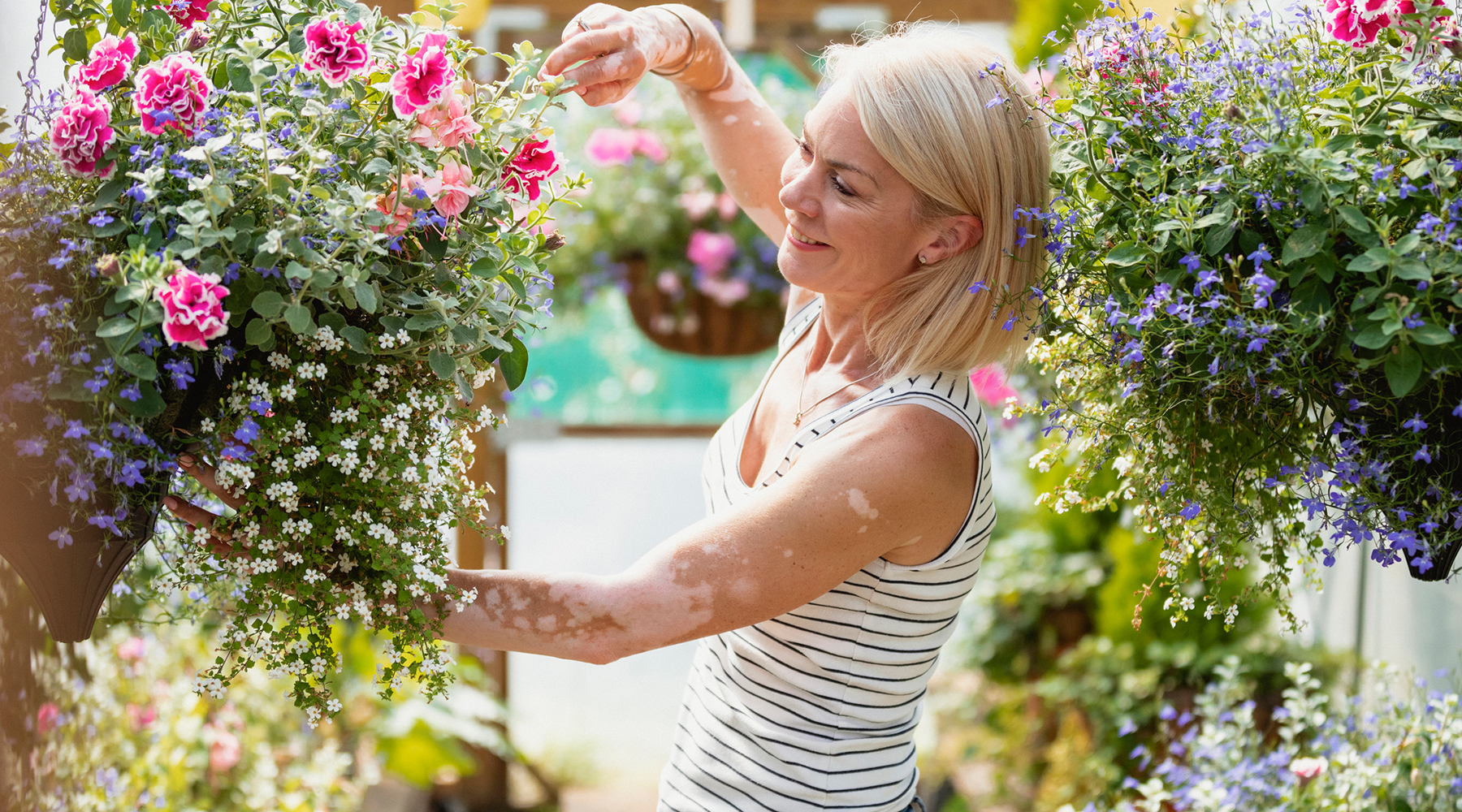
Cultivate your containers
An easy and effective way to brighten up walls, windowsills and forgotten corners of patios is to add containers full of colour, and choosing what to plant in your window boxes, hanging baskets and pots is the fun part. Consider a mix of plants in each one. Trailing plants like sweet potato vine and ivy, evergreens such as juniper and boxwood can both intermingle with bedding plants and seasonal flowers so you can enjoy year-round colour and interest, with pops of vibrancy throughout the summer. Or why not create a theme using the same plants and colours in all your containers? It will make a really beautiful cohesive display that’ll look like you’ve brought in the professionals and will really impress your visitors.
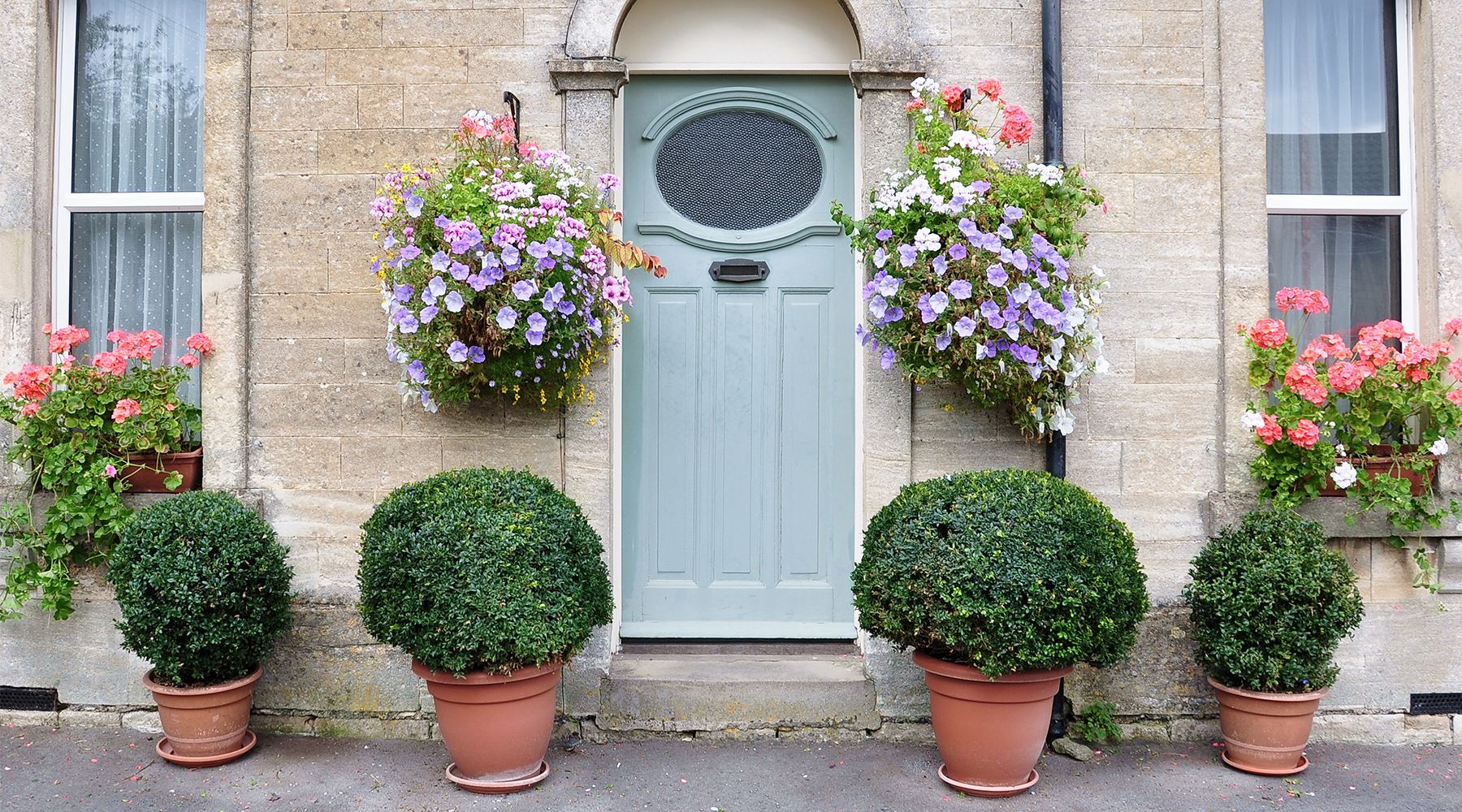
If your boxes, pots and baskets simply need a bit of a zhuzh, try removing the very top layer of soil and replace it with a new layer of compost. This will get rid of moss, debris, dried leaves and more, and the fresh dark soil will look superb against your blooming plants and flowers.
Give your lawn the classic striped look
Getting that elegant and much-coveted striped lawn effect takes patience and dedication, but it isn’t hard to do and never fails to brings the wow factor. First of all, you need thick, healthy and well-maintained grass to get the best look. Get rid of debris, apply your weed and feed solutions and build up the turf with new grass seed. The right kit is essential too, rotary mowers won’t cut it; you’ll need a cylinder lawnmower with a rear roller. The roller bends the blades of grass in alternating directions, which gives the light and dark striped effect based on how sunlight hits the grass.

Mow your lawn when it’s dry and use the longest blade setting you have as the grass needs to be long enough to readily bend under the roller. Mow your first stripe all the way along your lawn, turn 180 degrees and mow the next stripe alongside the first. Repeat until you have completed the whole lawn. To create a more dramatic look, mow the lawn again keeping to the same lines and directions or go over the grass again using just the roller with the blade switched off. Each time you mow the lawn, stick to the same lines and the more you mow, the more defined the lines will become.
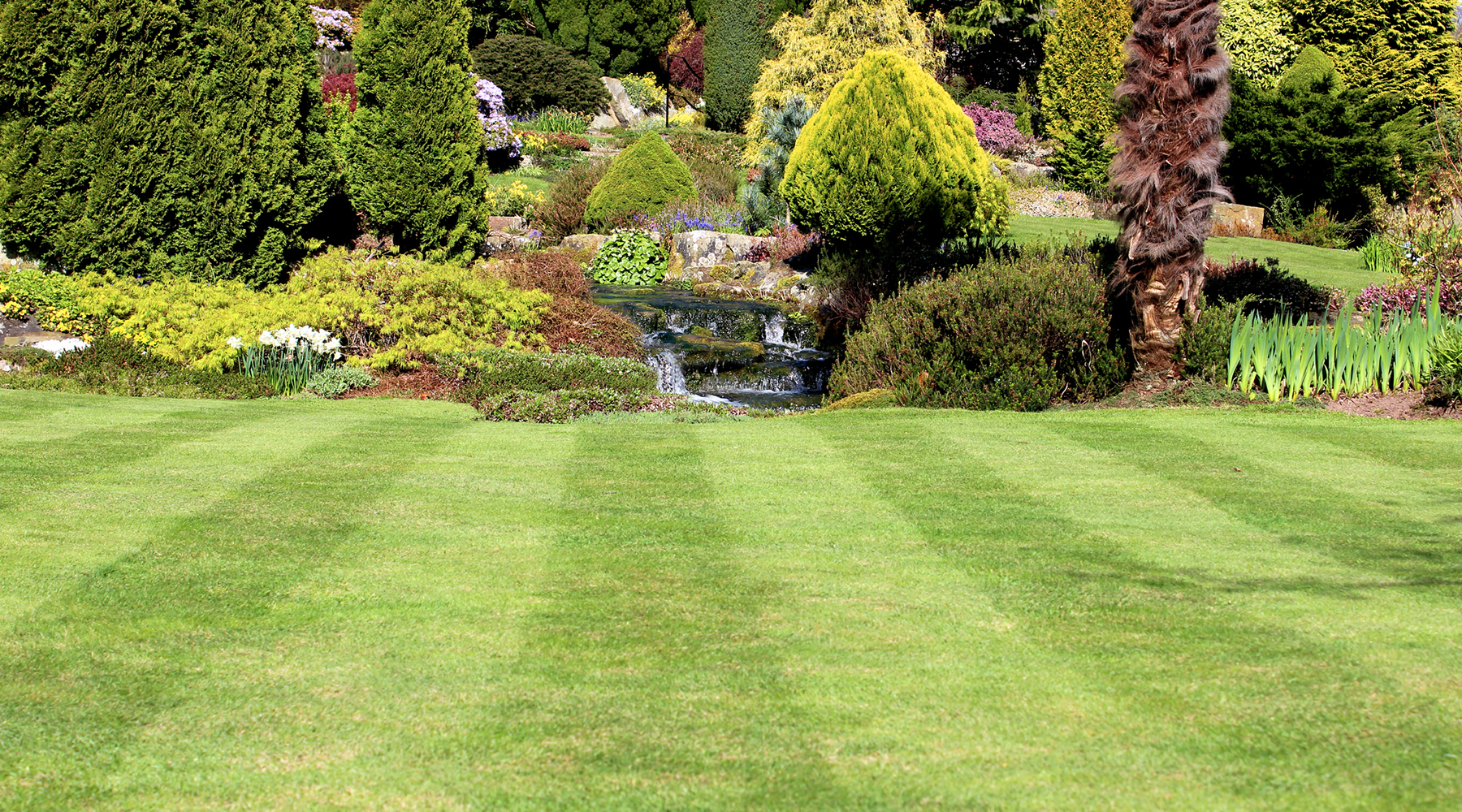
Nurture the needy
Give your growing plants a boost if they need it. Now they’re really starting to thrive, help them reach their potential with good quality feed. Next, tidy up those low hanging, or dead and dry-looking branches from your shrubs and trees and trim back any that are spoiling the shape, it will really give them a lift. If you’ve got plants that don’t look happy, check to see if they’re getting the right amount of sun or shade, or what their preferred soil type is and move them if you can. If you can’t improve the soil, reposition them or the move doesn’t help, it’s time to add them to the compost heap! If those plants aren’t working hard enough to enhance your garden, be ruthless.
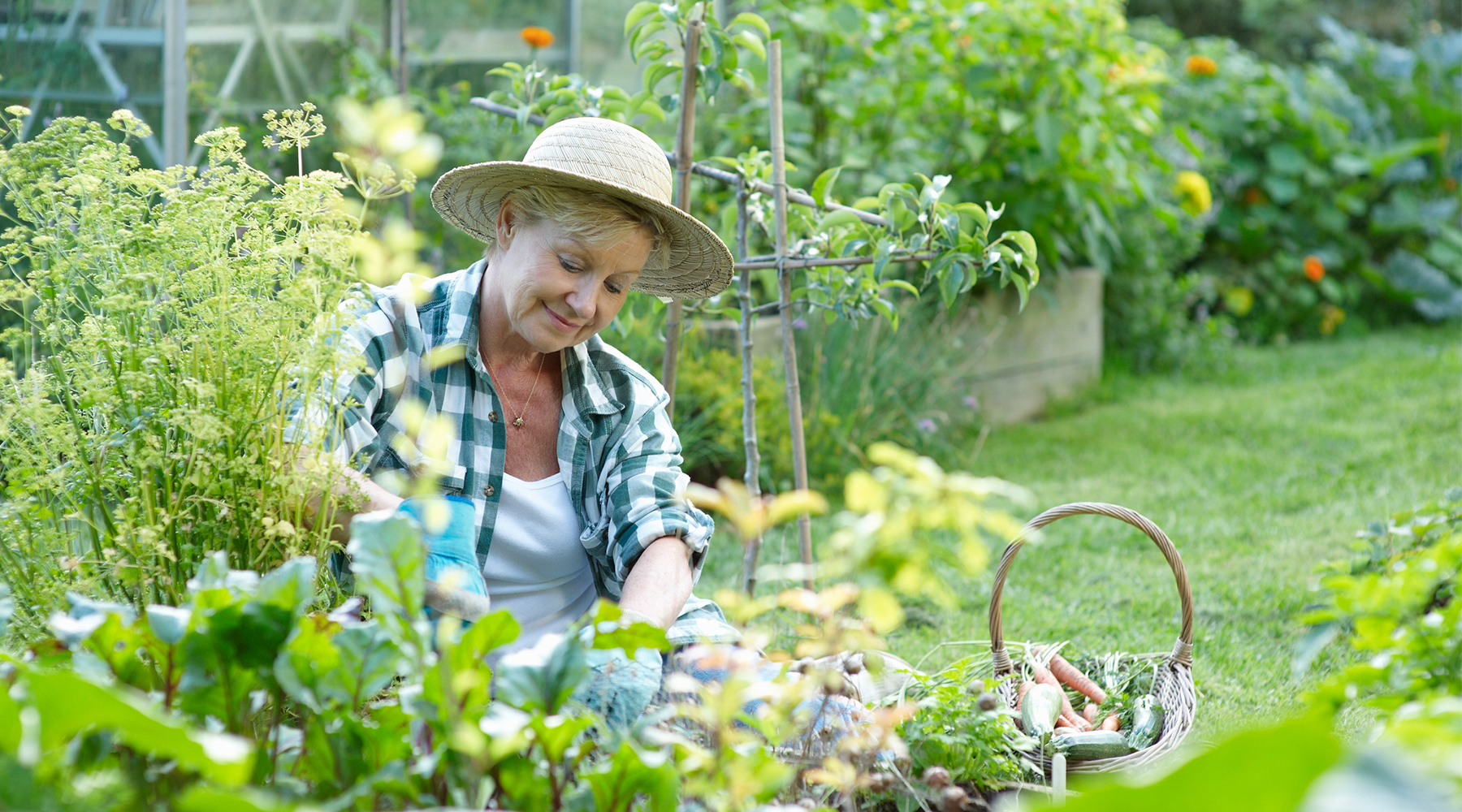
Tidy up and repair
Once the lawns, plants, trees and borders are looking ship-shape, it’s time to turn your attention to the rest of your garden. Replace pots that have broken during the frosts, repair or replace broken trellises or fence panels, jet wash the patios, weed the paths, clean up your garden furniture and wash the cushions, rugs and throws that you use outside. It’s amazing what a spin in the machine can do to revitalise soft furnishings.
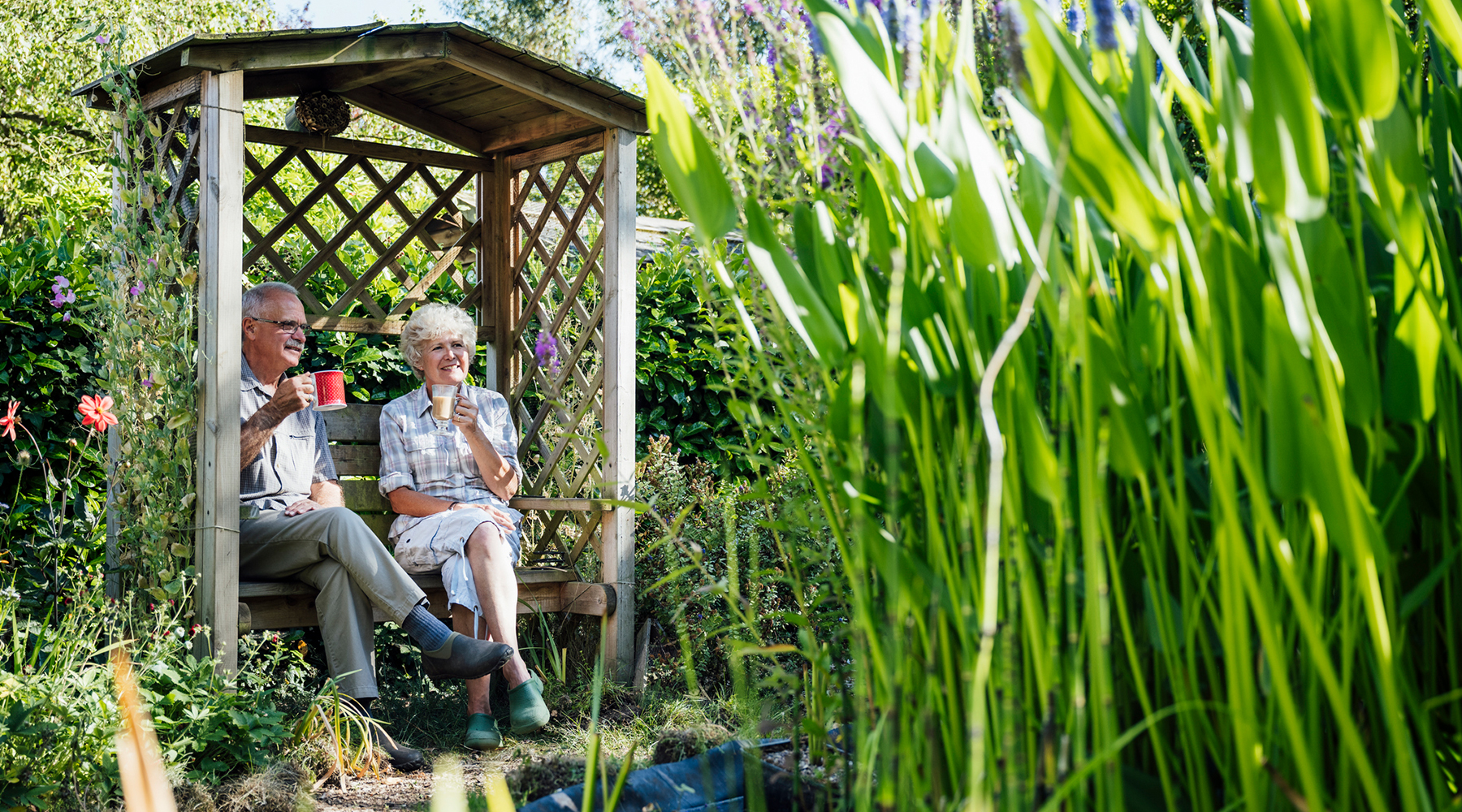
Embrace holistic style
While investing in some fresh accessories, be inspired by the decor inside your home. Translate those themes out into your garden to extend your living space. For example, if you have statement house plants, find outdoor furnishings that echo those shapes; take the accent colours in your kitchen or lounge, and pick cushions, throws or even flowers that will continue the colour theme. Your garden is like any other room in your house, so it’s all about creating a large welcoming space in which to spend time with each other.

The finishing touch
Create the perfect mood with the right lighting. Whether you’re a fan of fairy lights, love to pave the way with stake lights or like a statement lamp post, outdoor lighting is a sure-fire way to keep the party going after the sun has set…
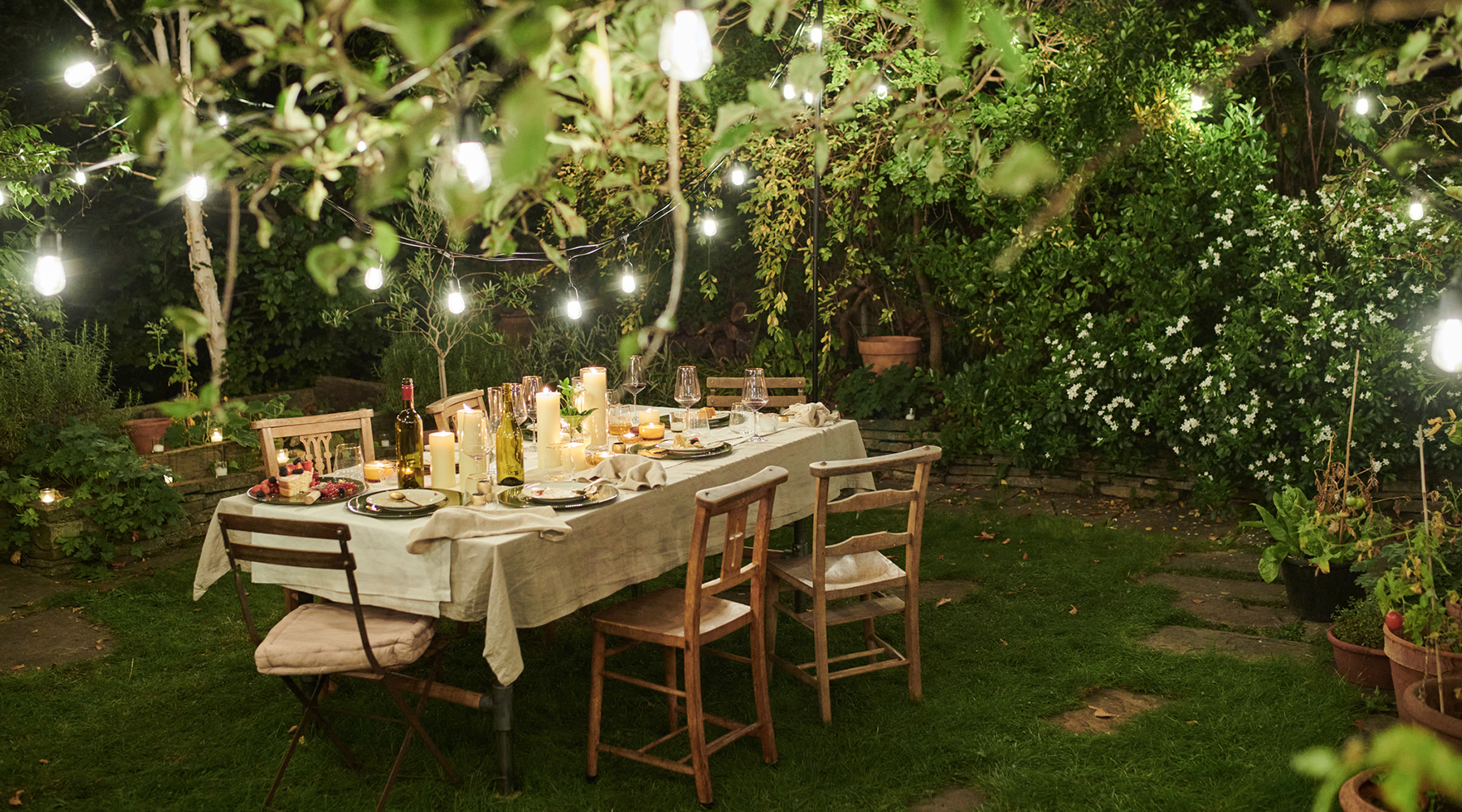
There is another way to ensure your guests aren’t left out in the cold, and that’s to build yourself an outdoor fireplace! A dream project for another blog post maybe, but something to think about, definitely.

However you decide to perfect your garden, you want your outside space to be the place where guests feel welcome; and we’re sure you’ll be happy to have them.
For more ideas, inspiration, plants, tools and more visit our garden department page now.
]]>Lots of members of the QVC family have discovered innovative ways to make working from home easier and even enjoyable, so we collated a few of their suggestions and ideas together to create your go-to guide to working from home.

Have a morning routine (this is a must!) – set an alarm for at least an hour before work so you’re not rolling out of bed and starting straight away with a fuzzy head, not in ‘work’ mode. There are so many things you can add to your morning routine to make it personal to you, but here are a few suggestions to give you an idea:
- Get up, dressed and ready as if you’re going into the office
- Quick meditation or/and yoga session – a 10-minute daily workout on an app or online should be just about right
- Get some fresh air – stand by the open backdoor or in the garden and listen to the birds for five minutes. If you’re an early riser, going for a short walk is even better. It’s rewarding for the mind to get a little burst of nature first thing
- While the kettle boils and your tea is brewing, jotting down in a daily journal what you did the day before is good for reflection; writing five things down in a gratitude book is good for the soul

Start middle, end – as well as creating a morning routine, make sure you also have a clear middle and end to your working day too, so it doesn’t bleed into your ‘home life’. Start the morning by writing down what you need/want to get done that day to put you into ‘work mode’ straight away. You don’t always have to follow it exactly but it’s a nice prompt to have right next to you.
Give yourself a break – don’t just list your work tasks, schedule breaks into your to-do list too. Without colleagues to suggest a coffee break or a trip to the canteen, you might find you need a nudge from elsewhere to step away from your desk. You could also set a reminder in the calendar on your laptop.

Get talking – if you’re alone all day and miss the office chat, suggest to a friend or work pal that you video chat over your lunch breaks, or if they live nearby you could meet up for a walk. Failing that, listen to a podcast, as it will still deliver that feeling of conversation you’re missing.
Tune in – music can be so helpful in getting you through a solo day working from home, although it doesn’t replace the background chatter of the office. Choose something instrumental if you get distracted by songs you know! You could also have the radio on quietly, the intermittent chat will keep you company without being too much of a distraction.
Where can we eat? If you’re working at the breakfast bar/dining table, you may find that there’s no room to eat dinner. Keep a ‘work box’ underneath the table and at the end of each day, pack your laptop, files and work things away and slide the box under the table or into a corner. There’s no point storing it away properly as you’ll be getting it all out again tomorrow, but at least it’s all in one place and out of sight! If you work in your bedroom invest in a foldable table so you can store your desk away at the end of the day as well.

Keep it together – like your desk at work it’s important to personalise your home office space if you can. Keeping all your work things together in a ‘work box’, is also handy if you need to move rooms. So, as well as your work essentials you could add your glasses, lip balm, headphones, work mug, desk organiser, even a relaxing candle etc. in there too. You can choose to use a tray, pouch, anything with enough room for all your essentials!

Move it – set a reminder to get up from your ‘desk’ every half an hour to an hour or so, just to stretch your arms and legs. Sitting all day can make you feel more tired, a change of pace helps to keep you energised. Making sure you get out for a run or walk at least twice a week on your lunch break if you can, is a must. It’s also a really good way of breaking up the monotony of the day, giving you a fresh outlook for the otherwise sluggish afternoon.
Just the two of you? Working from home with a partner can be another challenge. If you can, make sure you’re using separate rooms, especially if one of you takes lots of calls or sits in multiple Zoom meetings. Working, living and spending the weekends with the same people can be trying, make a conscious decision not to discuss work after your laptops are switched off, work has finished for the day. It should help ensure that you keep your work time separate from your downtime.

Let’s do lunch – where possible always take a proper lunch break, ideally away from screens to give your eyes a rest. Take your time to make a leisurely meal, walk the dog, call a friend, or set a time with the other people in your house to meet up in the kitchen to eat together, you could also read a book… or even get some household chores out of the way – so rewarding and you won’t have to do it at the weekend!

Create your environment – set your desk up so that you face a window offering lots of natural light to help you stay alert as well as an interesting view. Light a candle or wellbeing pod if you feel like you need a bit of a boost that day. House plants are also a wonderful way of adding vibrancy and colour to your office space – there are tons of benefits for having them in your home!

Make a change – if possible, move rooms for a change of scenery, as long as there is Wi-Fi you can create a fresh workspace. You don’t have to stay at home either. From cafes and pubs creating socially distanced community hubs to hotels offering office-hours day rates, there are ever more innovative ways that people can separate their work and home lives.

Turn it off! At the end of the day, switch off your PC, don’t be tempted to leave it open with the intention of checking your emails after dinner or finishing that last bit of work that can always wait until tomorrow. You wouldn’t be able to do this if your computer was in the work office, so when 5pm comes around, think home time, and do something like calling friends and family or going for a walk to immediately switch off from work.
]]>Soak in the tub – submerge yourself in warm (or hot) water with your favourite bath soaks or oils and let your arms and legs float in the water as you slip under the surface. Close your eyes and listen to your breathing, or the bubbles gently popping against the sides of the bath, put on a facemask or listen to some relaxing music and lock the door! Knowing you can’t be disturbed by kids, partners or pets will really help you to zone out.

How to fit it into your routine: twice a week, draw a bath instead of jumping in the shower
Get gripped by a great novel – the escapism of a good story can be more intense, as it inspires your imagination and can stay with you for life. There is also nothing better than putting your book down and counting away the minutes until you can pick it up again, because you have to know what happens next.

How to fit it into your routine: whenever you feel the need to check social media, or your mind drifts from the television screen, grab your book instead.
Step outside – fresh air is a tonic, whether you just sit in the garden, prune your prize roses, hike in the Peak District or run 10k on your lunch break, filling your lungs with fresh air is not only energising, but can also aid sleep. If you dress correctly for it, the weather can be an added bonus to your walk; even walking in the rain can be exhilarating, and with far less people around, a rain walk is a fantastic way to clear your mind. Exploring new places near to your home and watching the changing seasons are also a wonderful part of getting outside for some fresh air.

How to fit it into your routine: if your car journey is less than two miles, consider walking instead
Mind your mindfulness – get out of your headspace, as well as out of doors. Try not to get wrapped up in your thoughts but be aware of what the rest of your body is feeling in the moment instead. Tune into your other senses when you find your mind getting clogged; when you’re doing the dishes for example, feel the bubbly water on your hands and smell the liquid as you clean the plates. Or open a window and listen to the birds, feeling the breeze as it crosses your face.

How to fit it into your routine: instead of reading the paper with your morning cuppa, sit on the patio and watch the wind blow the leaves on the trees or the birds fluttering in and out of the bushes.
Try yoga – holding a pose and clearing your mind is a centuries-old way of boosting your physical and mental wellbeing. You don’t have to attend a class, there are thousands of online lessons and YouTube channels to subscribe to. You don’t even need to be terribly flexible to start with, for example the Shavasana pose involves you lying flat on your back with your eyes closed. It’s incredibly relaxing and really helps to clear the mind.

How to fit it into your routine: once or twice a week on your lunch hour, try 30-45 mins of poses and you’ll really feel the difference afterwards. Then dine al desko as you check your emails and ease yourself gently back into work.
Savour the flavour – and enjoy your food. Try not to eat in front of the television, sit at the dining table and really taste your meals; above all, eat things you enjoy. Allow yourself to relish every bite by taking it slowly and putting your knife and fork down between each mouthful. Make dinner a social event for everyone in your household. Even if you fancy a takeaway, get plates and cutlery and sit together to discuss the day with each other. You know the saying, a problem shared is a problem halved – taking time to talk is a great way to lift the burden and relax.

How to fit it into your routine: make a promise to each other that you eat your evening meal together at the table five days a week or try and breakfast together at the weekends when a more leisurely pace is easier to accommodate.
Clear your mind at bedtime – knowing that you’re going to have trouble getting to sleep with all the day’s thoughts and worries bouncing around in your head can be stressful. Keep a notepad by the side of your bed and jot down the thoughts that are stopping you from drifting off, then promise yourself that you will look at them the next day. This should help to clear your mind enough to let it sleep.

How to fit it into your routine: instead of that last scroll through Facebook or watching a show to help you drift off, try turning the lights down 20 minutes earlier, closing your eyes and taking time to clear your thoughts before you’re ready to sleep.
Listen to your breathing – slow it down. Take slow deep breaths, in through your nose to the count of eight, and out through a slightly opened mouth with a relaxed jaw, to the count of four. There’s a reason women in labour are taught breathing exercises, and you can try it at your desk, in the car, or before you go to bed. Calming breathing techniques are also used for coping with stress and anxiety and should be done daily to get the most out of them.

How to fit it into your routine: sit with your arms resting in your lap, close your eyes and take slow, deep breaths for three minutes.
]]>
I’m only a puppy and a few months old but I know I already like lots of things. I love stealing socks, unrolling kitchen roll and taking it out into the garden, I love running along the beach and exploring among the plants!
At the moment I’m still too little to jump up onto the sofa, but my dream is being able to do it whenever I like, when I’m bigger!

I was very pleased to be picked as the winner of the pampered pets competition and I’m so proud be the new face of the QVC Pets page!
But for now I’m off for a snooze!

See you soon.
Lots of woofs,
Lola
]]>